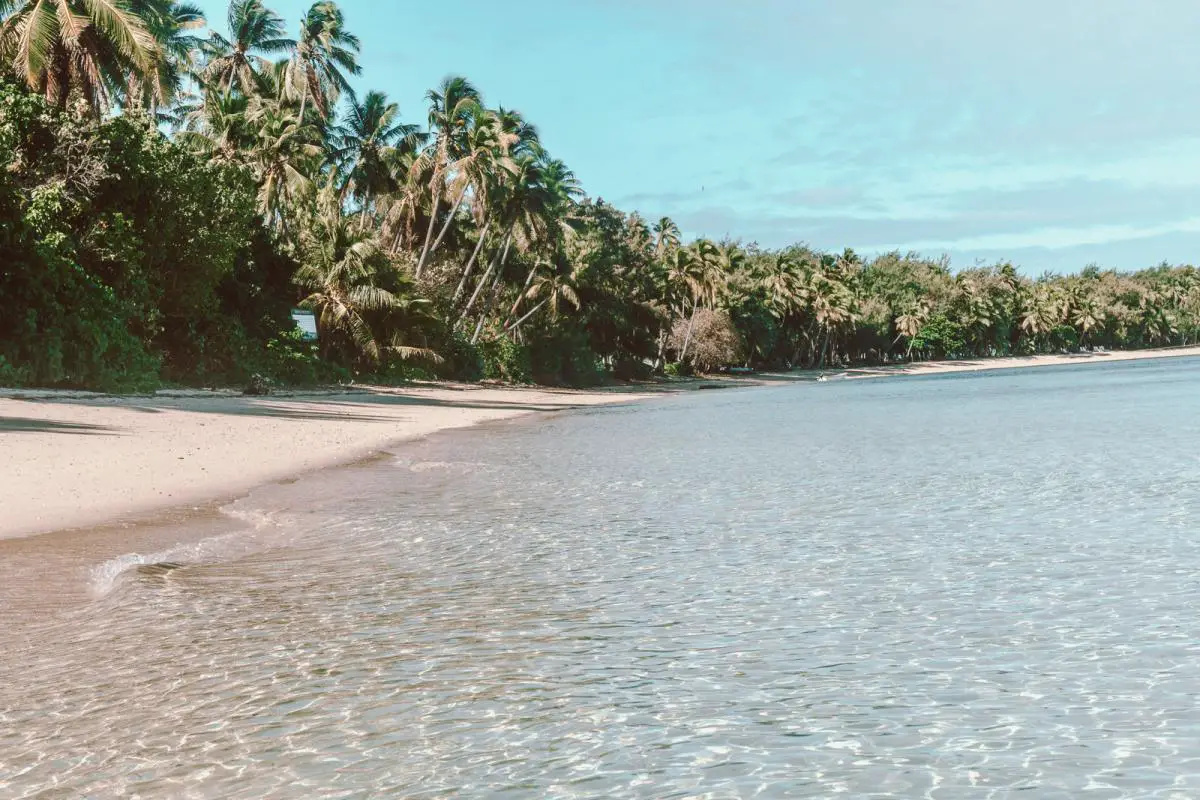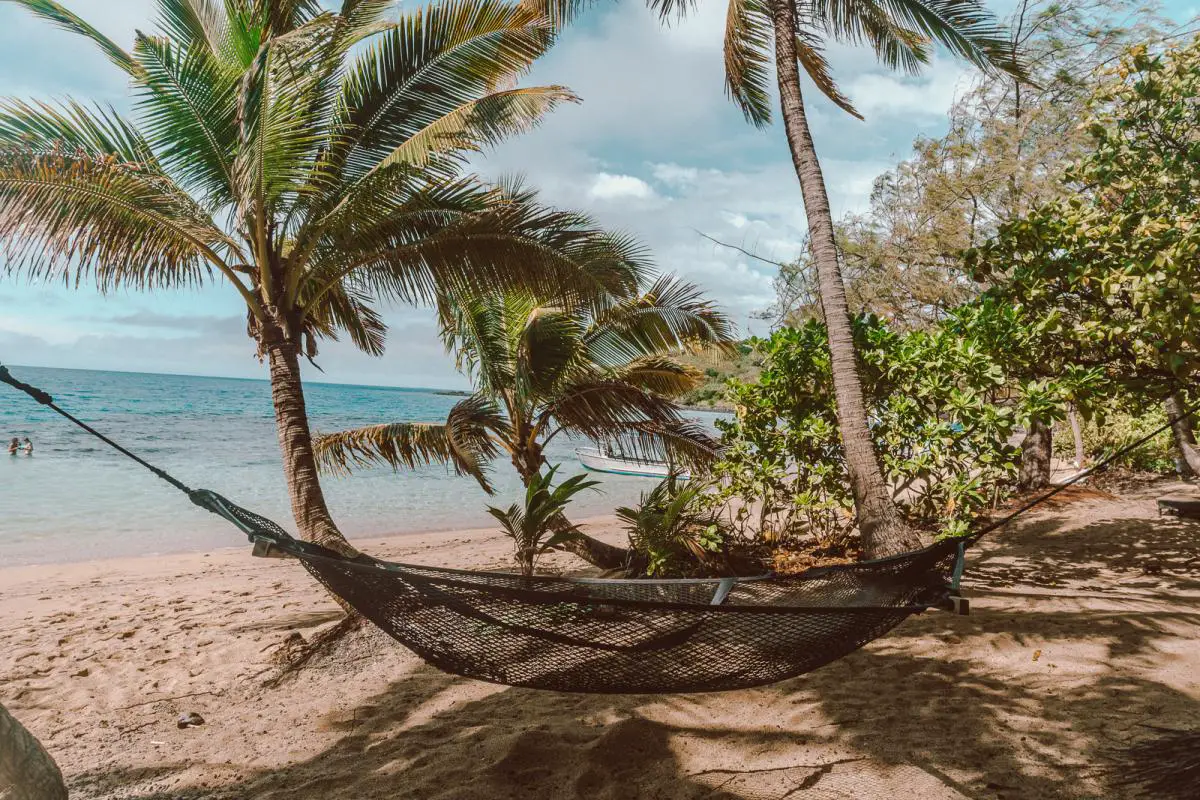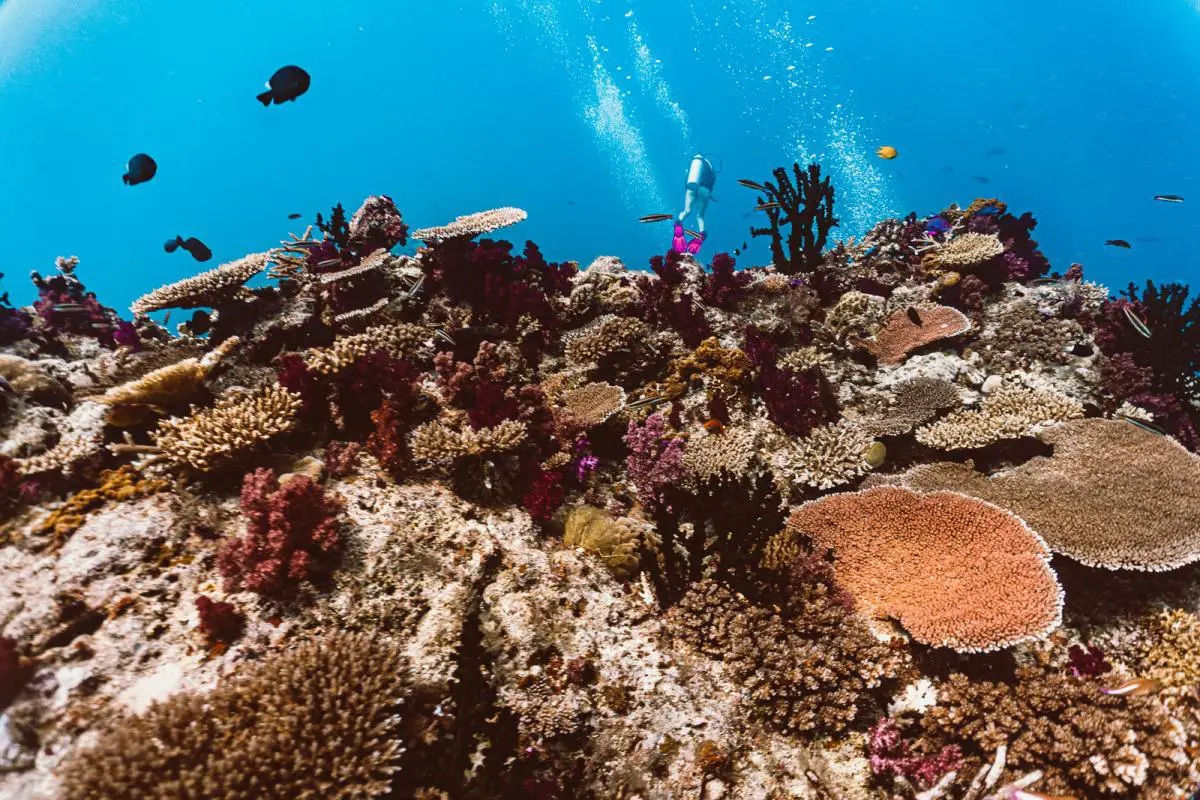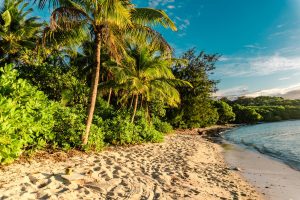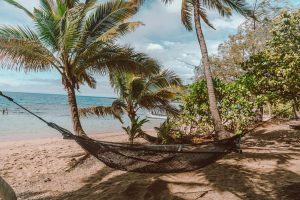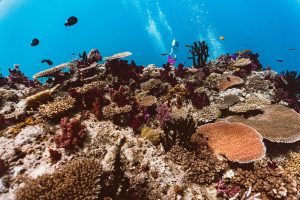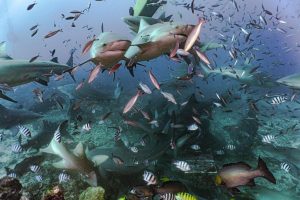Picture this: palm-fringed white sand beaches, crystal-clear turquoise waters, lush tropical rainforests teeming with vibrant wildlife, and a warm, welcoming spirit that envelops you as soon as you set foot on the islands. This is Fiji, an unspoiled paradise in the South Pacific that beckons travelers with its natural beauty, rich culture, and a sense of tranquility that can only be found in remote corners of the world.
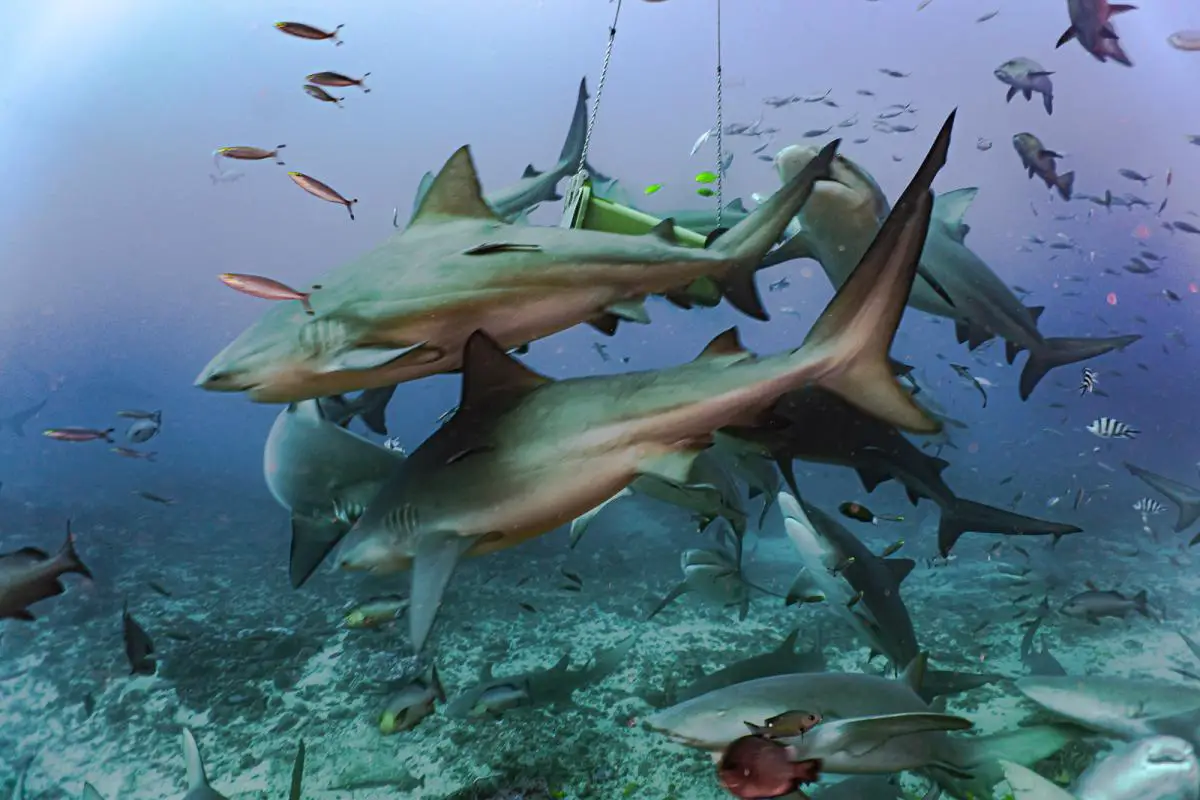
If you’re seeking an escape from the ordinary, a place where time slows down and your worries melt away with the setting sun, Fiji is the answer. In this travel itinerary, we’ll guide you through a journey that encapsulates the best of Fiji, from the bustling markets of Nadi to the remote and pristine Yasawa Islands. Whether you’re a thrill-seeker, a culture enthusiast, or simply someone in search of serenity, Fiji has something to offer everyone.
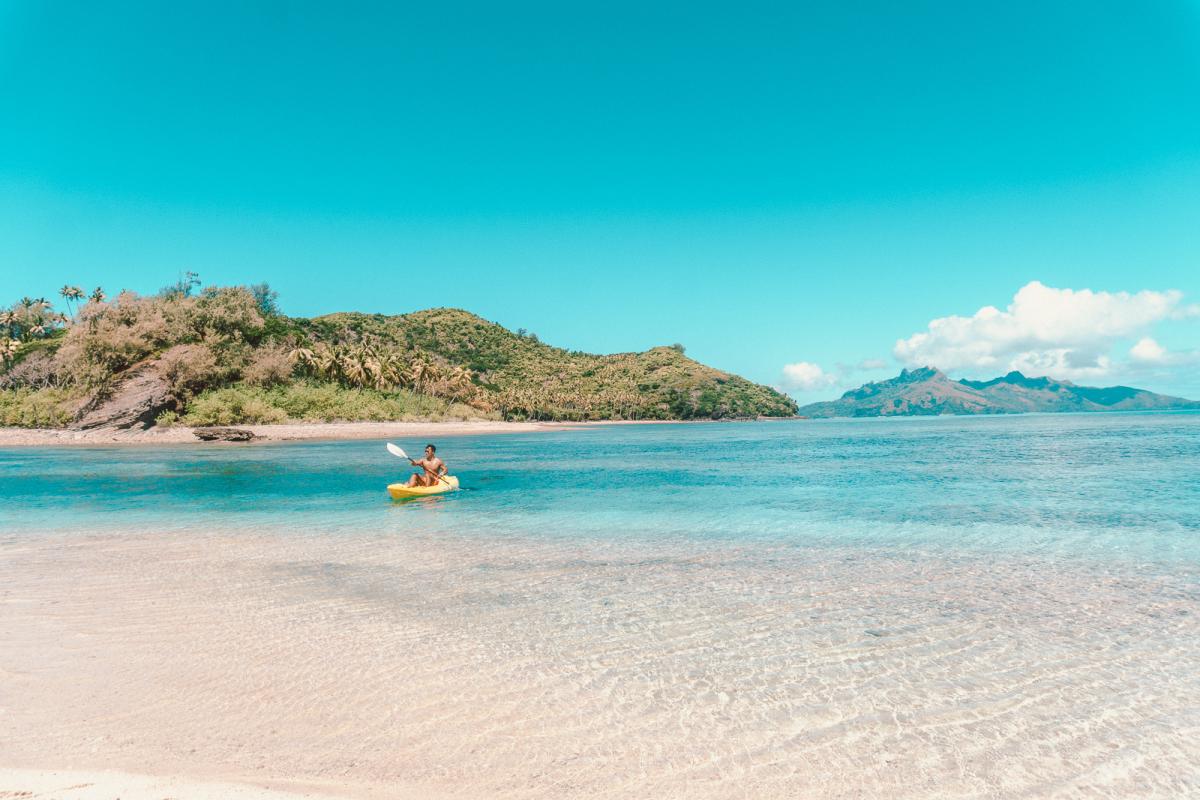
Nevertheless, I will help you with your trip as much as I can so you can get the highlights and then start planning your trip back to this beautiful country! Make sure to read my other posts on Fiji that deep dives into the places I visited!
List of my other Fiji Posts
Where to go in Fiji for two weeks
Fiji has a world of wonders to offer visitors but I was only able to visit for 2.5 weeks. I would have loved to have spent another week or two to see more islands but that’s just how things go. As I am an avid scuba diver, much of my trip was centered around diving and the underwater world. If you don’t dive, you can still spend time on these places and simply do other activities.
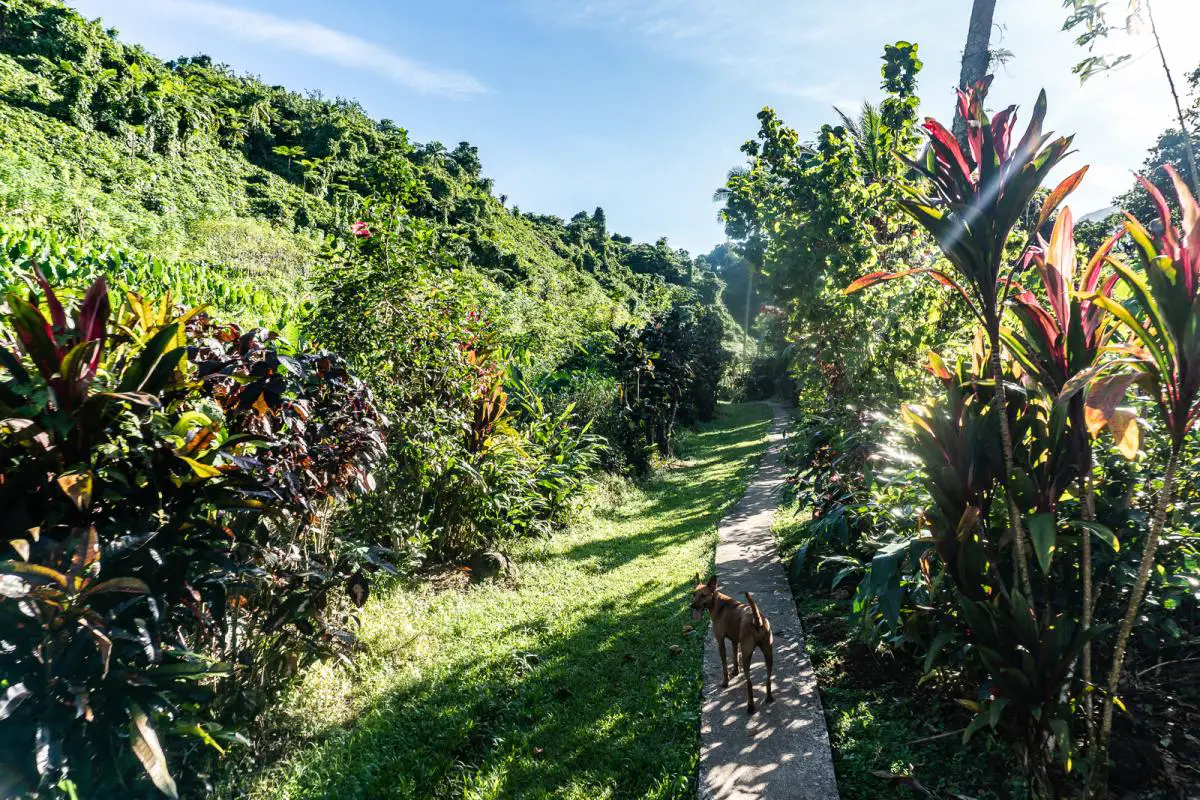
These are the main highlights that Fiji has to offer from my research
- THe Yasawa Islands
- Mamanuca Islands
- Bull shark diving around the Beqa Lagoon
- Coral Coast on the main island of Viti Levu
- Taveuni (the Garden Island)
- Great Astrolobe Reef at Kadavu island
- Beaches and resorts around Savu Savu
- Lau islands for the really adventurous
I spent most of my time in Taveuni and the Yasawa islands. I also spent a few days in Kadavu diving (attempting) the Great Astrolobe Reef. Unfortunately, the weather was really bad when I visited and it rained the entire time (during the dry season!) which meant diving was not possible. However, the natural beauty of Kadavu was stunning and I really wished I could have seen the reef longer than I did.

Avoid traveling much of Vita Levu where Nadi and Suva are
After spending a few weeks in Fiji, I can safely say that you probably don’t need to spend much time on the main island. Many of the itineraries I saw had the main island of Viti Levu in their itineraries but I don’t think you need to spend much time here. Even the locals that I talked to advised that I didn’t spend much time on Viti Levu and go out to the surrounding islands. Viti Levu is a huge island that spans 146 km wide and 106km long. You’ll need a car to properly do this island justice so if you don’t want to drive, this is a non starter.
The main cities of Nadi and Suva are a big skip. There’s nothing to see in these cities and there’s nothing to do. There aren’t even many decent restaurants or cafes to go to. I would spend any time in these cities if you know someone living there that can show you a good time.
While the coral coast has some decent beaches like the world famous Natadola Beach, I really don’t think it is anything that impressive. There are simply nicer beaches in Fiji with brighter and more beautiful colors. Viti Levu is too big to have that Fiji island charm and many of the places I saw simply were not the iconic Fiji I was expecting (personal preference).
The only exception I would make for visiting Viti Levu is if you’re planning to do the Beqa Lagoon shark dive. This is based out of Pacific Harbor and one of the craziest dives that you’ll ever do. It’s a huge bucket list item for many that visit Fiji (myself included) which meant I did spend a few days on the mainland to do this activity. Alternatively, you can also dive with bull sharks at the Barefoot Koata resor tin the Yasawa island chain so technically, you could avoid Viti Levu altogether.
Avoid Port Denarau
Port Denarau is a popular area for many of the tourists that come to Fiji. This area is located south of Nadi and is main ferry terminal to go to the Mamanuca and Yasawa island chains.
Port Denarau is home to all of the big hotel chains like Marriott, Hilton, Intercontinental, Radisson, and more. This area is clearly aimed towards families, older travelers, and people that want that resort vibe. Port Denarau is also not pretty at all. The beaches are nonexistent and you’ll find nothing but hotel food. Prices of hotels are also exorbitantly high and you can find something 100x more beautiful and more authentic on any of the islands nearby.

Best time of year to visit Fiji?
If you’re contemplating a journey to this island paradise, you might wonder when the best time to visit Fiji is. The good news is that Fiji welcomes visitors year-round, but your experience can vary significantly depending on the time of year you choose for your adventure.

Just to note that these are all averages and you can get all types of weather at any time of year given it is the tropics. I visited during the dry season and had many days of rain while in Taveuni and other places like Kadavu!
High Season (July to September): Perfect Weather and Thriving Marine Life
During Fiji’s high season, from July to September, you can expect impeccable weather with warm, sunny days and pleasant nights. Rainfall is minimal, making it an ideal time for outdoor activities and beach lounging. The dry season also brings excellent underwater visibility, perfect for snorkeling and diving enthusiasts. You’ll have crystal-clear waters to explore vibrant coral reefs and marine life.

Additionally, you might catch some of Fiji’s vibrant festivals, like the Bula Festival, which showcases Fijian culture and traditions. However, it’s important to note that the high season attracts a significant number of tourists, leading to crowded resorts and higher prices for accommodations and activities. Booking in advance is advisable, especially as flight and accommodation costs can be elevated during this period.
Shoulder Season (October to November, April to June): Balancing Crowds and Cost
Fiji’s shoulder seasons, from October to November and April to June, offer a pleasant compromise between weather, crowd levels, and cost. The weather remains pleasant, with occasional rainfall. You can still enjoy sunny days while experiencing fewer crowds and lower prices for accommodations and activities.
If you visit from October to November, you might even witness the magnificent humpback whale migration. However, be aware that some dive sites might have reduced visibility during these months.
Low Season (December to March): Tropical Showers and Fewer Crowds
Fiji’s low season, spanning from December to March, is characterized by fewer tourists and affordable prices. The heavy tropical showers during this wet season may deter some travelers, but they also contribute to Fiji’s lush landscapes, which are at their greenest and most vibrant during these months.
Prices for accommodations and activities are at their lowest during this period. Despite the occasional heavy rainfall and high humidity levels, the low season can be a fantastic opportunity to experience Fiji without the crowds.
Is two weeks enough time to visit Fiji?
At first glance, I didn’t think much of Fiji as far as how much it had to offer. I figured it was just a few islands and that I could see most of the place in a week or two at most. I even considered taking a flight to another country nearby like Tuvalu to check it off the list. The more I researched Fiji ,the more I realized boy was I wrong.
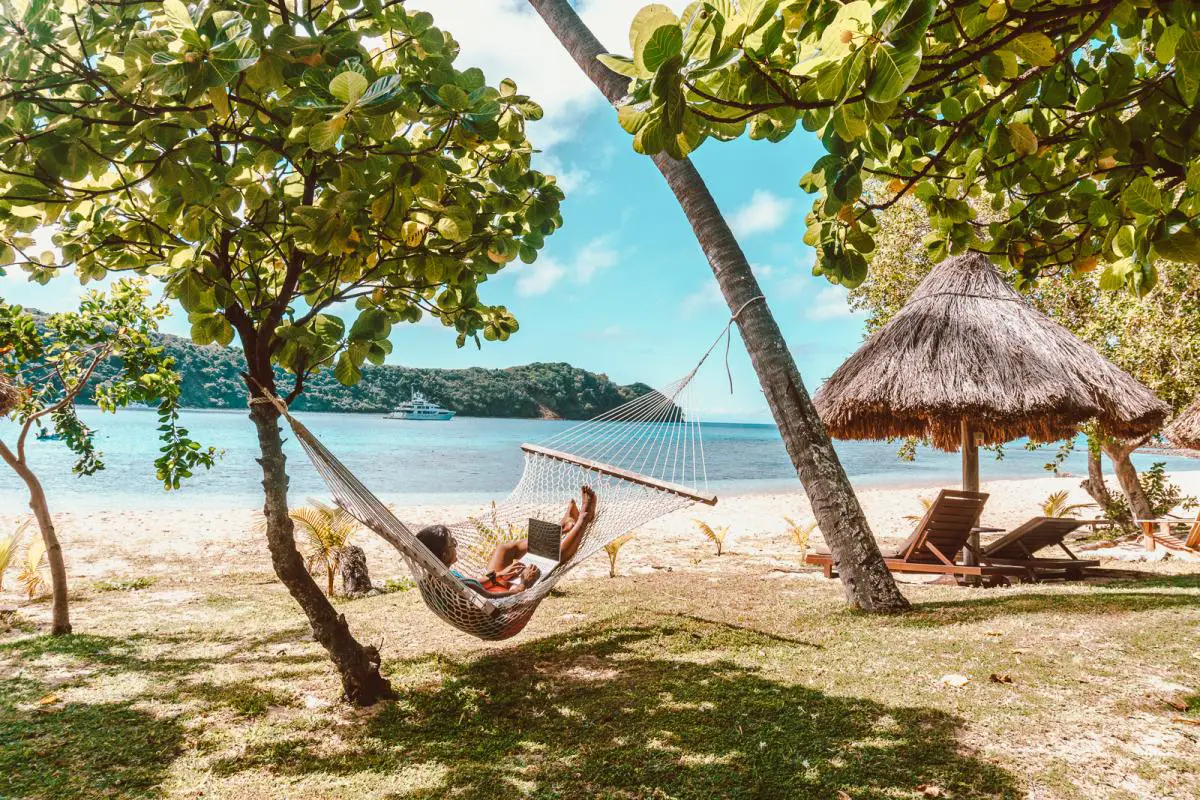
There is a lot that Fiji has to offer and two weeks turned out to be way too little for all the places that Fiji had. I filled up 2.5 weeks no problem and wish I had more time in the end! Everyone has their own travel style and priorities so my needs might not be yours. I did a lot of diving and absolutely love beaches so I made sure I had plenty of time to see beautiful beaches. If you don’t need these things, then you could spend much less time in Fiji.
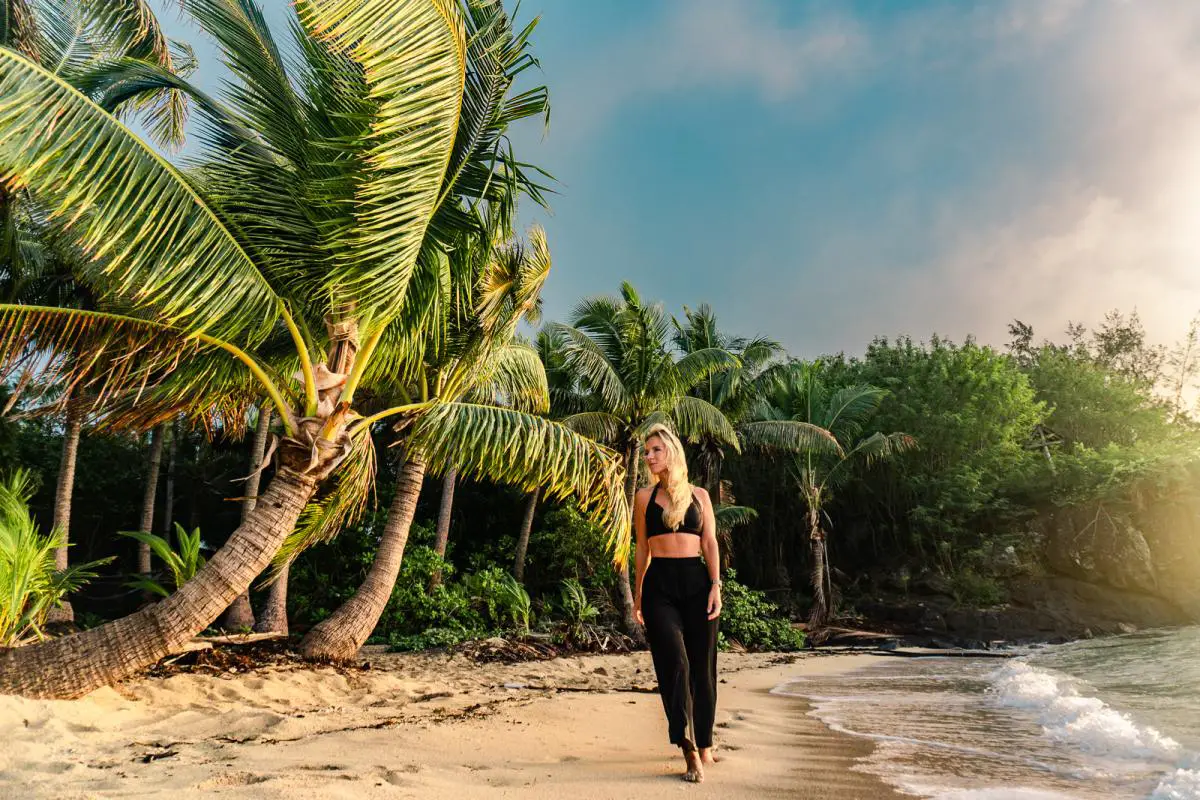
I spent a week just traveling through three different islands in the Yasawa island chain. I could have easily visited another island or two and I didn’t even get around to visiting any of the Mamanuca islands. I also rushed through each island with 2 nights in each island but I could have easily spent 3 or more.
Traveling around Fiji also takes time as you’ll constantly be taking small flights from island to island or ferries. These eat up into your itinerary so make sure to factor that in before!
What to know before visiting Fiji?
Fiji is an easy country to travel around. The infrastructure is great, the people are super friendly, and the country is safe. Here are some of the tips I have from what I learned during my trip.
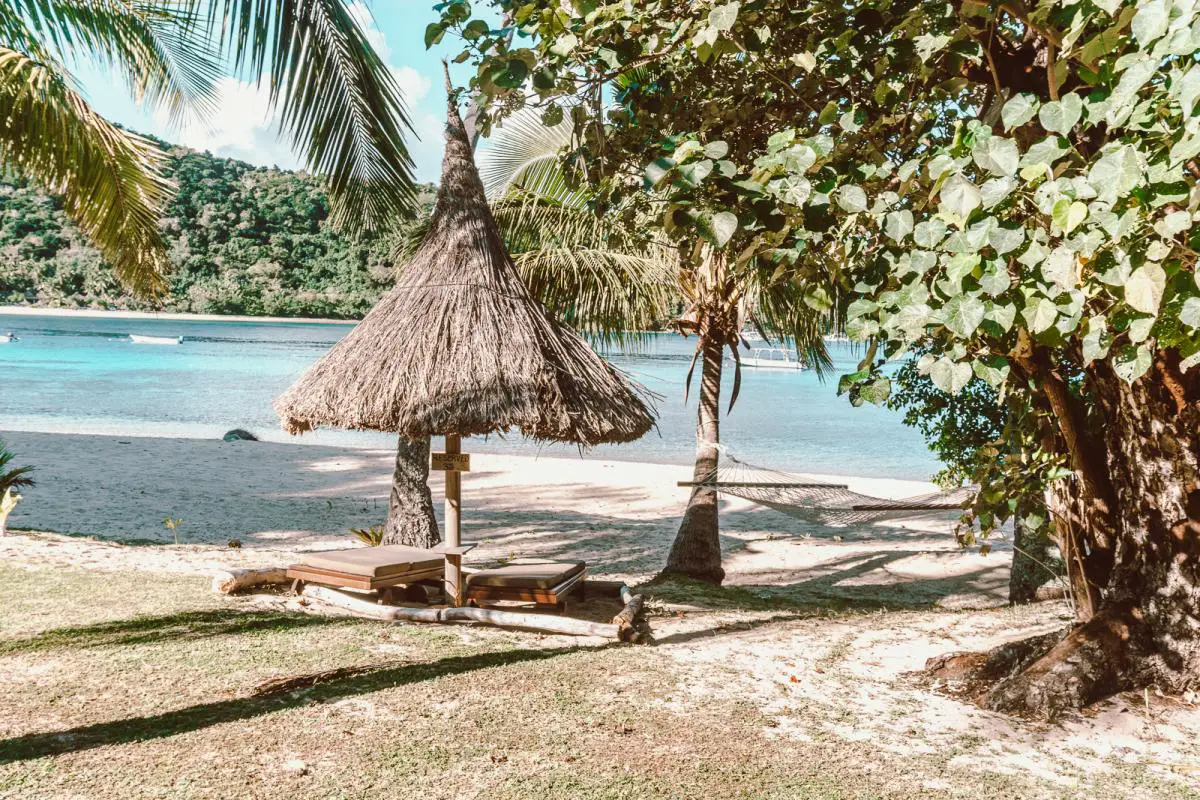
Get the free tourist sim card and top up
Like anywhere in the world I travel, I always opt for a local SIM card when arriving and Fiji is no different. One of the unique things about Fiji however is that every tourist can obtain a free SIM card. Yes, Fiji offers you free tourist SIM cards that come with a few gigs of data.
Vodafone and Digicell are the main players in Fiji and they both have stores at the Fiji International Airport in Nadi where you can pick up a free SIM card. In addition to the free SIM card, they will try and sell you additional data packages at a heavy tourist price. Simply say no to purchasing any additional packages and just do it on your own by topping up credit to your SIM card and buying data individually.
As an example, Vodafone wanted something like 35 FJD for 2 weeks and 30 GB of data at the store in Nadi. However, if you just top up yourself, you can get the same package for about 10-15 FJD. Top up yourself and save yourself lots of money!
Cellular service is decent enough on the main islands like Viti Levu and Vanua Levu. However, islands like Taveuni had spotty service and the Yasawa islands only had 3G at best.
Bring cash when visiting the islands
Cash is king in Fiji. This is because almost all the hotels in the country will charge a hefty premium for using a credit card. I saw fees ranging from 3-5% which negatives any rewards you might receive from credit card rewards! I found myself taking money out of the ATM constantly especially as I pay no ATM fees with my bank.
When visiting places like the Yasawa islands, make sure to bring cash with you from the mainland as there are little to no ATMs on the island. You’ll find plenty of ATMs at Nadi airport or Port Denarau.
There are no scooters here
Fiji has no scooters in the entire country. Having traveled so much of Indonesia for example, I love having my own scooter to get around. No one uses scooters, even though it would make complete sense for the population as most can’t afford cars. The only way to get around the island is by car, taxi, or bus. This makes it restrictive to see bigger islands since renting a car is quite expensive.
Fiji is not a cheap place to travel
Fiji is not a budget travel destination. As it is located in the middle of the Pacific and imports almost everything, you can expect things to simply cost more. Prices are not as high as visiting typical European hotspots but don’t expect budget prices like in Bali and other parts of Southeast Asia.
Lodging is the most expensive part of Fiji by far as there aren’t many options for cheaper travel as much of the tourism in Fiji is catered to high price points. I would budget something like 200 FJD a day for budget travel and 500 FJD for a nicer experience.
Pack reef safe sunscreen
Make sure to stock up on reef safe sunscreen if you plan to dive or snorkel. Fiji has a very delicate ecosystem that has withstood the test of time up to this point. Let’s do our best to protect the marine life of Fiji!
Stock up on supplies because there’s not many places in Fiji to buy stuff
Make sure you stock up on toileties and any other things important to you. If you lose something like a contact lens case, you’ll be hard pressed to find it in Fiji. There are large grocery stores on the main island but as soon as you leave the mainland, there aren’t many places to buy things.
Full Fiji two week itinerary
Finally, onto my Fiji itinerary! If you’re wondering whether you should do a mainland Fiji trip or an island Fiji trip, hopefully my previous sections have already answered the question. I would highly recommend island hopping and completely avoiding the main islands of Viti Levu and Vanua Levu.
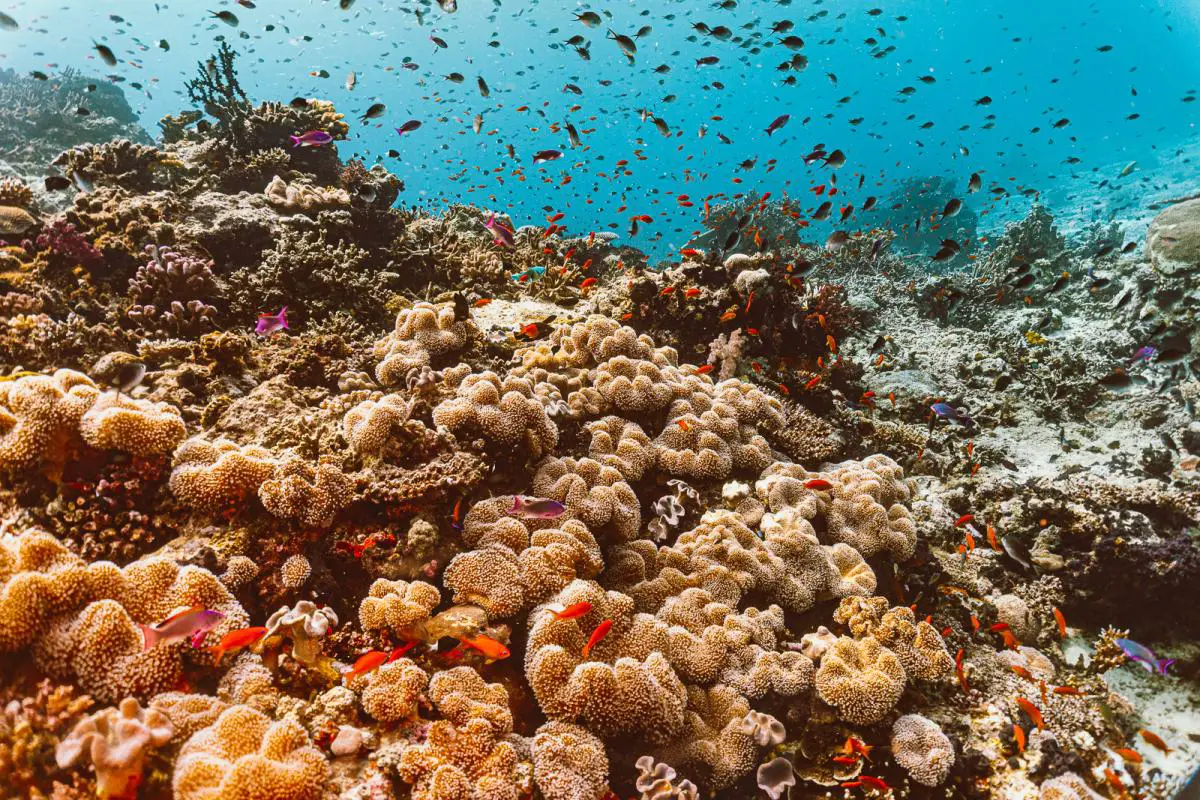
The trip starts in Nadi where your international flight will take you. There’s nothing to see or do in Nadi so this time is best spent taking a bus or taxi to Paciicc Harbour for the famous Beqa Lagoon Shark dive. There isn’t much to explore around Pacific harbor unless you fancy a visit to the Fiji water plant!

From Pacific harbor, I went to the Garden island of Taveuni which is an absolutely stunning and green island. It is home to the Rainbow Reef which is located in the Sumotomo strait between Taveuni and Vanua Levu island. The diving here is among the best in the world and I can safely say this as I’ve dived in so many different places. It’s rated as the most beautiful corals in the world and I would have to agree! From Taveuni, it was time to fly back towards Nadi and spend at least a week traveling through the Yasawa islands. I took the Yasawa flyer and spent a week visiting three different islands. I wish I had more time in this part of the country but I will have to save it for next time!
Map of my Fiji Itinerary
Day 1-3: Arriving in Nadi
Every flight to Fiji will arrive in Nadi so this is where you’ll start out your trip. Like I’ve already mentioned, I would recommend staying in Nadi for no days at all. There’s nothing to do in the town and nothing to see. However, I understand not everyone will want to go straight to another place especially if you’ve had a long flight.

Therefore, I would recommend taking a day trip to the Cloud 9 restaurant and bar out in the middle of the ocean! This bar is world famous and all over Instagram as a literal restaurant in the middle of the ocean. You can grab a ferry over from the mainland for a fixed cost where it will take you to the restaurant. You can spend as much time as you want here including snorkeling, sun lounging, and have great drinks with unbeatable views.

Finally, make sure to visit the world famous Natadola Beach which has been consistently ranked as one of the top beaches in the world. This long sandy beach is 1 hour from Nadi and is perfect for a half day. To be honest, while I think it is beautiful, I think there are nicer beaches in Fiji.

Day 3-5: Beqa Lagoon Shark Dive
The next part of the itinerary is to visit the world famous bull sharks at the Beqa Lagoon. From Nadi, you’ll head straight to Pacific Harbor which is the town in front of the Beqa Lagoon. I stayed here for two nights as I wanted a full day without rushing to enjoy the shark dive. However, if I had more time, I would have stayed another night or two so I could do one more day of shark diving as it was so amazing.

I would not spend more time than that however as there really isn’t much to do in Pacific Harbor. While the beach is long and sandy, it’s not as beautiful as beaches in the other islands of the country.
Nadi to Pacific Harbor
From Nadi, you have a few ways to get to Pacific Harbor:
- Taxi: The fastest way is by taxi. THis will take around 2.5 hours and cost around 200-230 FJD.
- Bus: There are a few bus companies that do the route from Nadi to Pacific Harbor. Pacific Transport has multiple daily departures from Nadi to Suva with Pacific Harbor along the way. The cost is 10-12 FJD and it will take 3 hours.
If you are short on time and only have one day for the shark dive, you could take a taxi around 5:30am and make it in time for the morning briefing at the dive shop. Unfortunately, no buses will depart early enough from Nadi for you to make the dives.

Is shark diving in Fiji safe?
One of the first things you’re probably asking yourself is the safety of these shark dives. As a diver, we already know that sharks are not the blood thirsty beasts the media likes to portray them to be so I will skip that part altogether.

As for this specific dive in Fiji, I must say that I found the entire operation to be very trustworthy. Beqa Adventure Divers, as well as the other two dive shops in Pacific Harbor, really know what they’re doing. They’ve done these dives for decades now multiple times a week. The divemasters and instructors here follow a strict safety protocol and do not mess around.

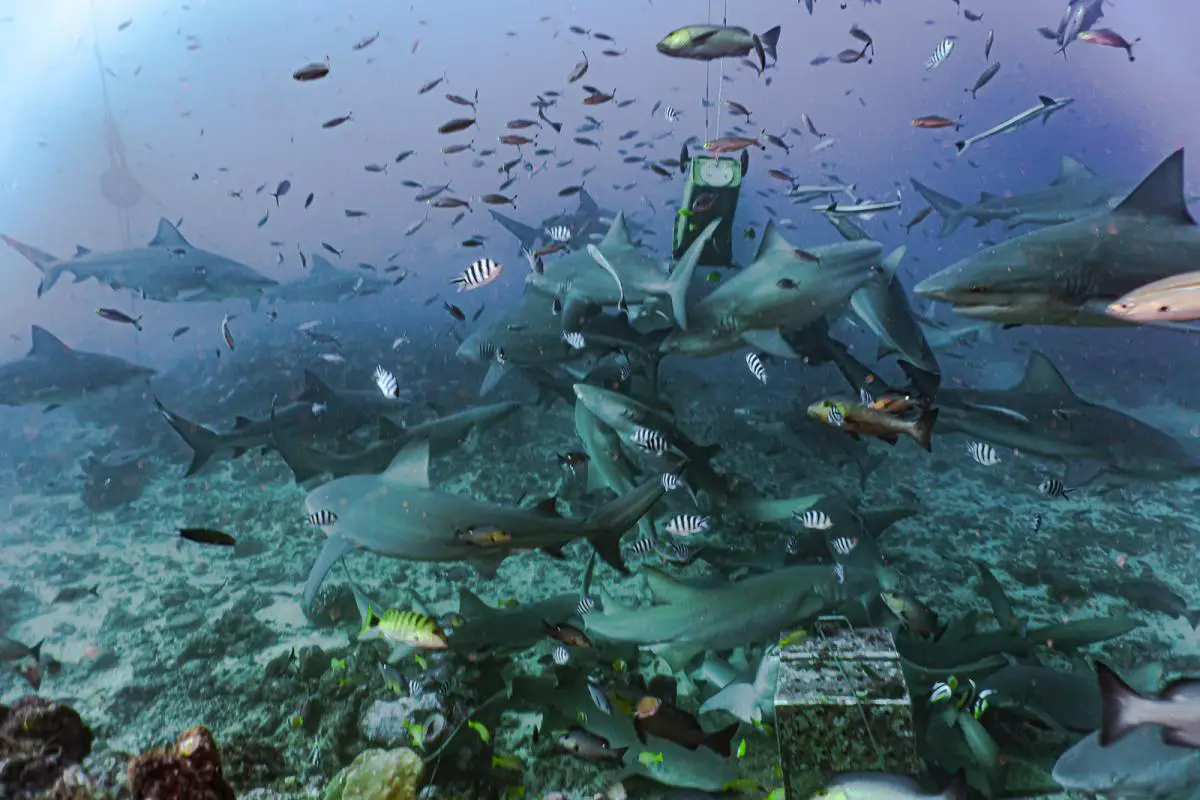
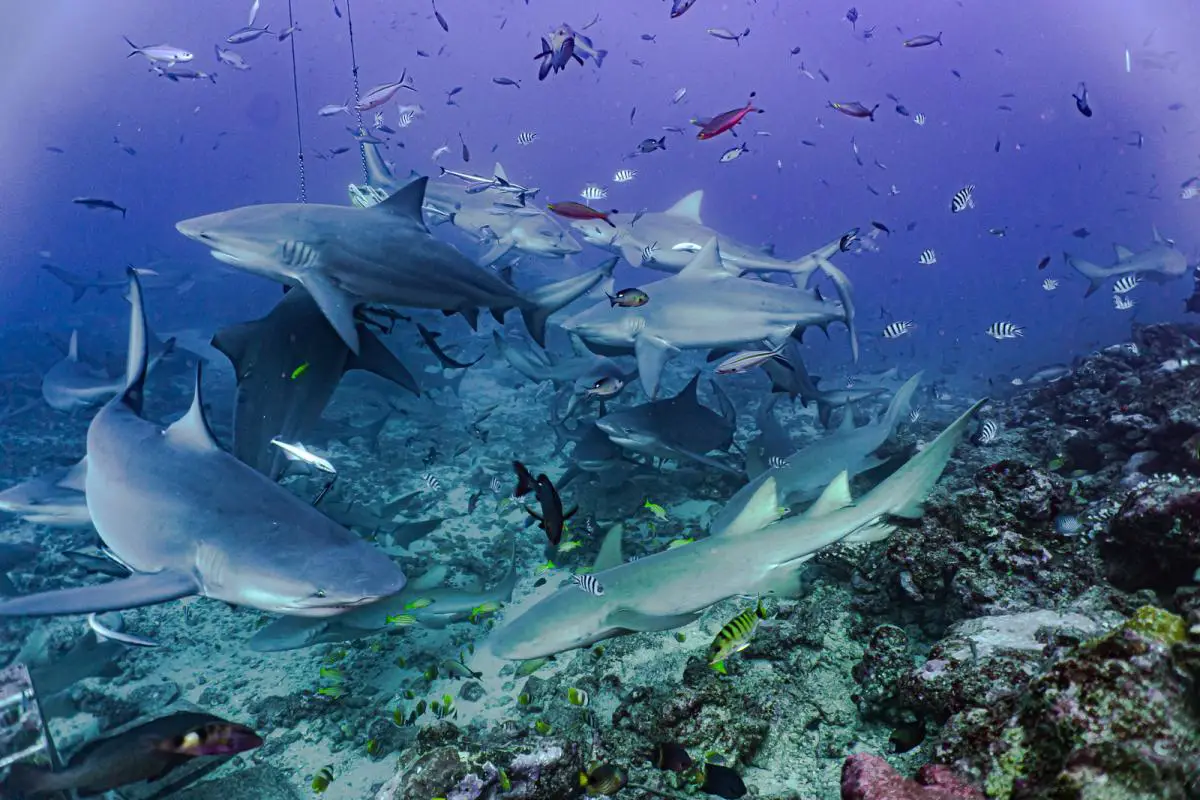
They tell you things like sit still while watching the show, do not extend your arm to take a photo as sharks see this as a sign you’re feeding them, swim slowly, etc. There are also at least one shark handler per 5 divers. These handlers carry metal rods that are used to gently poke sharks that get too close to the group. These guys were always behind the group monitoring the sharks activity.
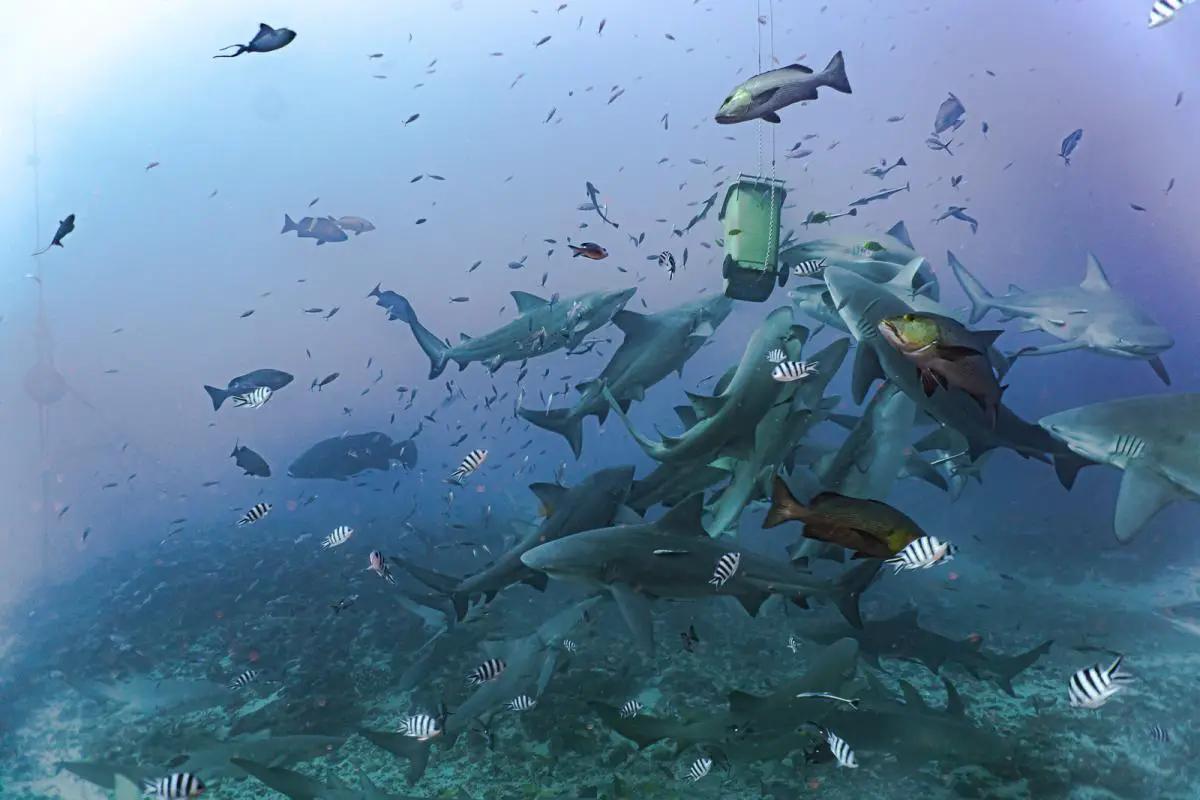
I didn’t feel unsafe at any point and was not scared regardless of these shark handlers but I know they definitely helped the less adrenaline seeking individuals within the group!
What type of sharks do you see while diving in Fiji
There are a total of 7 species of sharks that can be seen on the famous shark dive at the Beqa Lagoon. These species include:

- Bull Shark (Carcharhinus leucas): Bull sharks are often the main attraction of the Beqa Lagoon shark dive due to their presence in the area. They are known for their adaptability to both saltwater and freshwater environments.
- Tiger Shark (Galeocerdo cuvier): Tiger sharks are another species commonly encountered during the dive. They are easily recognizable by their distinctive markings and are known for their curious and inquisitive behavior.
- Nurse Shark (Ginglymostoma cirratum): Nurse sharks are also seen in the area. They are generally slow-moving and docile, making them safe to observe up close.
- Silvertip Shark (Carcharhinus albimarginatus): Silvertip sharks are known for their distinctive silver-tipped dorsal fins. They are commonly found in the Pacific Ocean and are known to frequent deeper waters.
- Lemon Shark (Negaprion brevirostris): Lemon sharks are typically found in warm coastal waters. They have a yellowish hue, which gives them their name.
- Grey Reef Shark (Carcharhinus amblyrhynchos): Grey reef sharks are often seen in the vicinity. They are commonly found around coral reefs and are known for their slender bodies and grey coloring.
- Blacktip Reef Shark (Carcharhinus melanopterus): Blacktip reef sharks are named for the black tips on their dorsal fins. They are commonly found in shallow waters around coral reefs.
Tiger sharks are the big dogs of the ocean and they are not frequent visitors to the Beqa Lagoon. They are larger than the bull sharks and the bull sharks all make space when one does show up. Unfortunately, there was no tiger shark sightings on my dive. Tigers are all purely based on chance so if you get lucky, you’ll see one of these magnificent sharks!
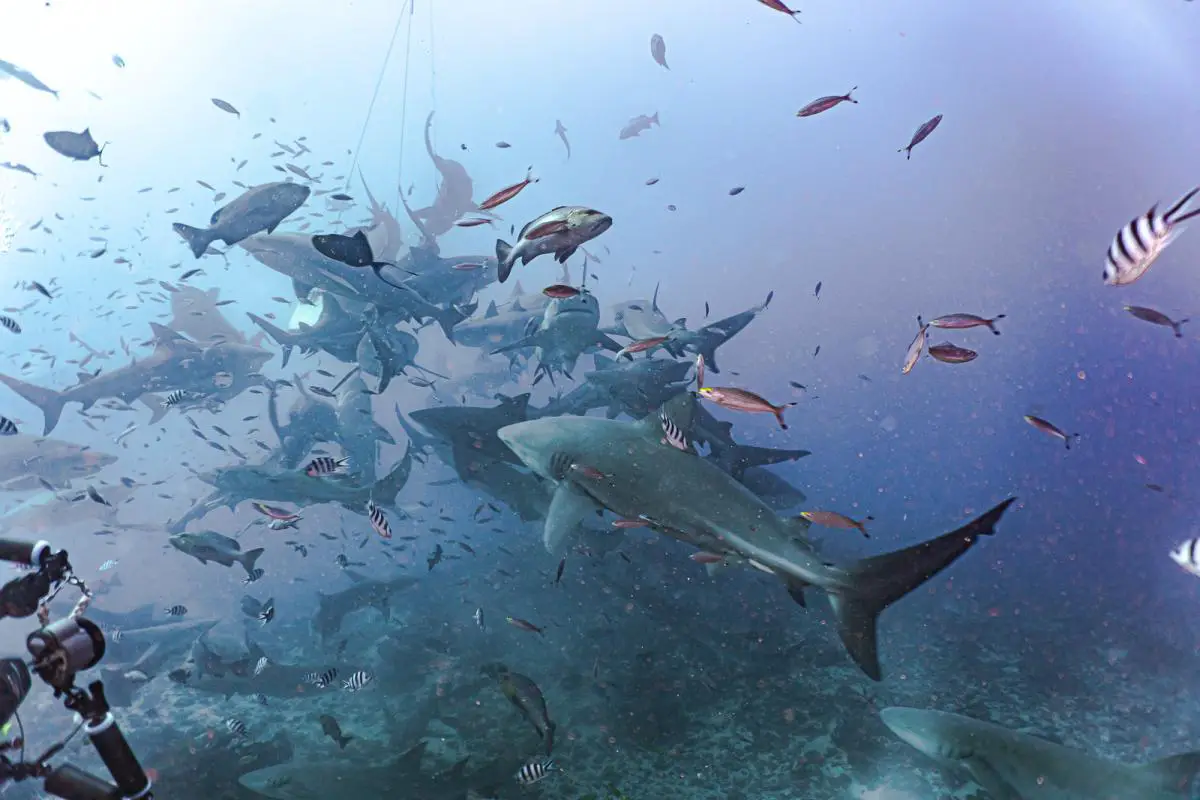
Just make sure you don’t end up like the diver from Malaysia who had his head in the mouth of a tiger shark in this very dive spot!
Day 6-10: Taveuni and the Rainbow Reef
From Pacific Harbor, it’s time to go to Taveuni island which was one of the highlights of my trip. Affectionately known as the Garden island by the locals for its ultra arable land where anything you plant grows, this island is the dicing mecca of Fiji.
It’s home to the world famous Rainbow reef which lives up to its name for its immense diversity and colors. The corals are among the best I’ve ever seen and to still have this type of ecosystem in today’s world is something special. The Rainbow Reef is also home to the Great White Wall dive which is rated as a top 10 dive in the world. More details on that later.
How to get to Taveuni and the Rainbow Reef
The best way to get to Taveuni is by flight. For 99% of tourists, this is going to be the way you come here because the ferry takes an entire day from Suva. There are multiple daily flights to Taveuni from Suva and Nadi. These flights are all operated on Fiji Link which is part of Fiji Airways.

These island hopper planes are the preferred way to get around Fiji and I absolutely loved taking them as they offered beautiful views of the Fijian islands.
Where is the Sumosomo strait?
The Sumosomo straight is located between Fiji’s second largest island of Vanua Levu and its 3rd largest island of Taveuni. Channels are always a good place to start looking for beautiful underwater life as the channel currents generally bring in ample amounts of nutrients and plankton that the corals/fish thrive on. The Sumosomo strait is home to the Rainbow Reef which truly lives up to its name in every essence of the word.
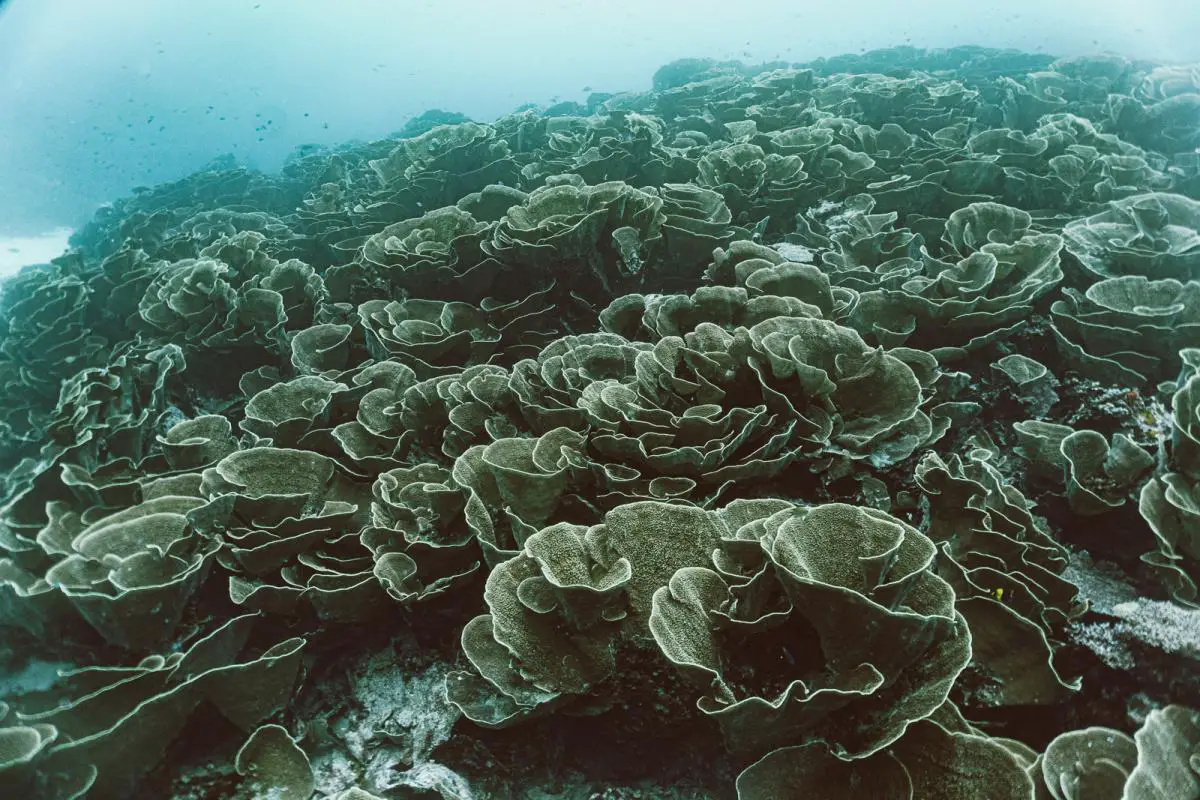
The underwater world here is so colorful that I saw colors that I had never witnessed before. As you’d expect with the South Pacific, there are countless species of fish, incredibly healthy corals, and pristine conditions all abound. I would compare the Rainbow reef to other top diving spots like Raja Ampat, Komodo, and Sipadan.
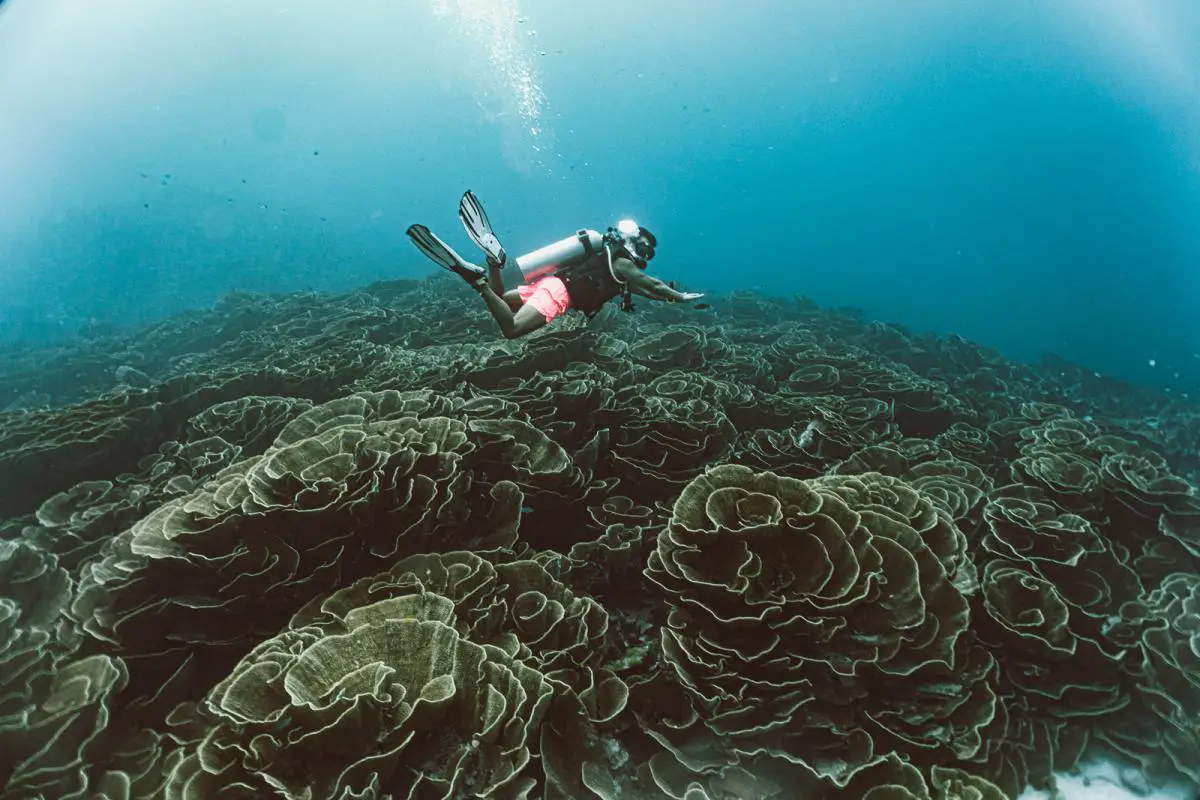
The Rainbow reef is also home to the ultra famous Great White Wall dive which is an absolute must if you are diving in the area. More information on that in later sections of this post. While the Rainbow reef isn’t known for its big stuff, you can be lucky and see the occasional manta ray and numerous shark oceanic shark species.
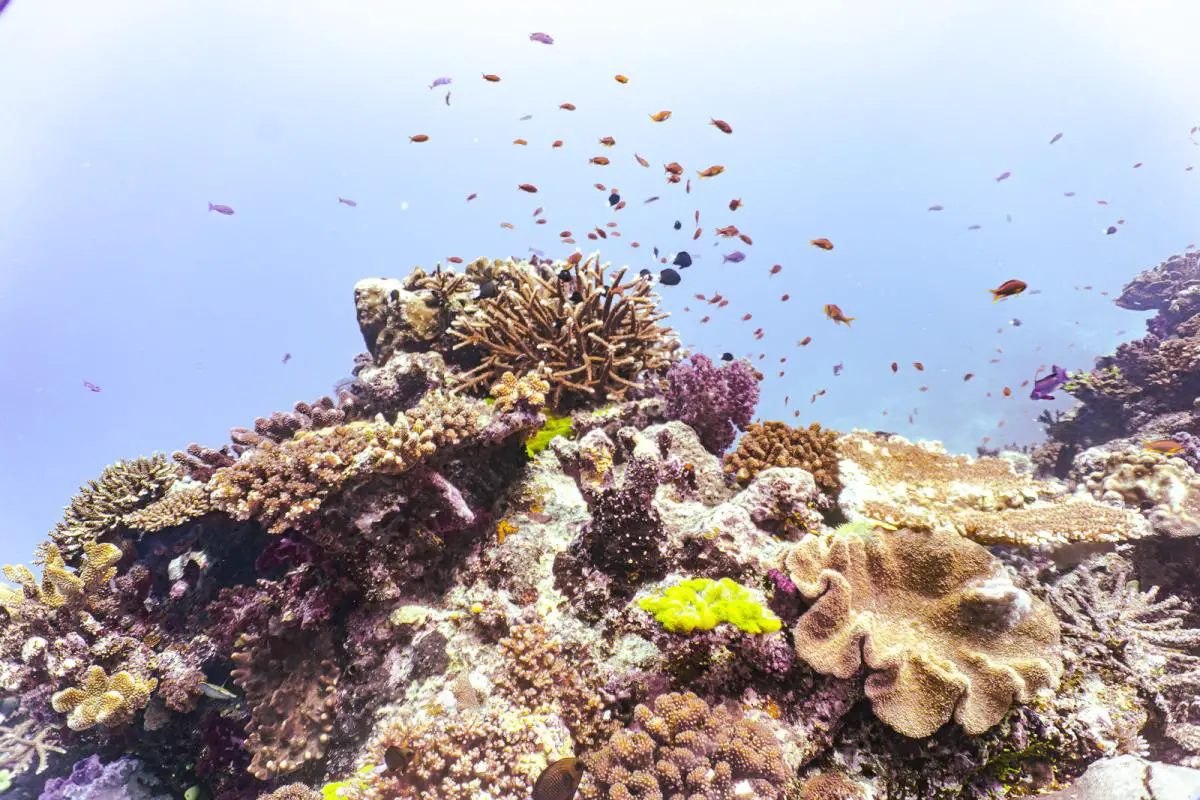
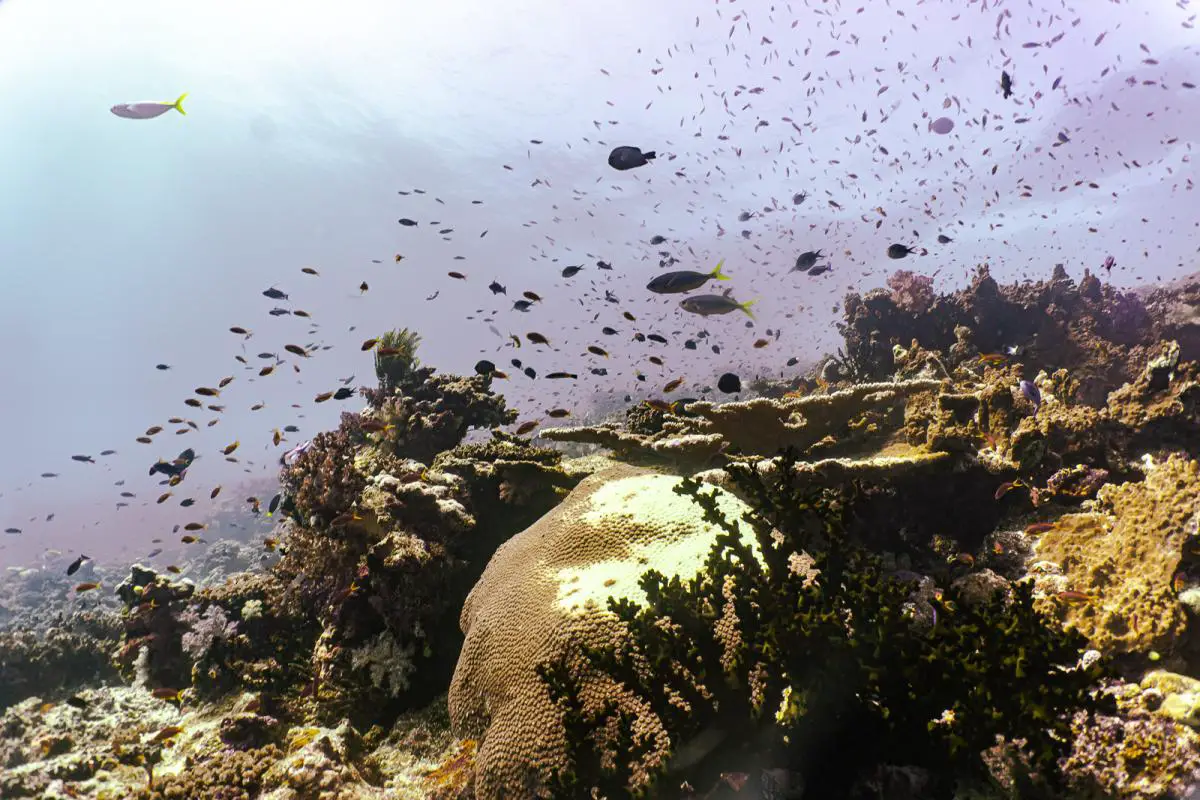
We were lucky enough to see a humpback whale on the surface! A mother and calf were casually swimming through the channel! Unfortunatelyj, we were not lucky enough to snorkel with them as the whales swam off into the distance. If that were to have happened, I might have well just called it a career in diving!
Diving in the Rainbow Reef
Now on to the good stuff, the actual diving of the Rainbow Reef. Like I’ve already mentioned numerous times in this post, the diving in this part of Fiji is among the best in the world. Every dive that I did had different things to offer. Huge schools of fish, incredibly vibrant corals, moray eels, sea snakes, garden eels, various nudibranch species, reef sharks, and more were on offer.
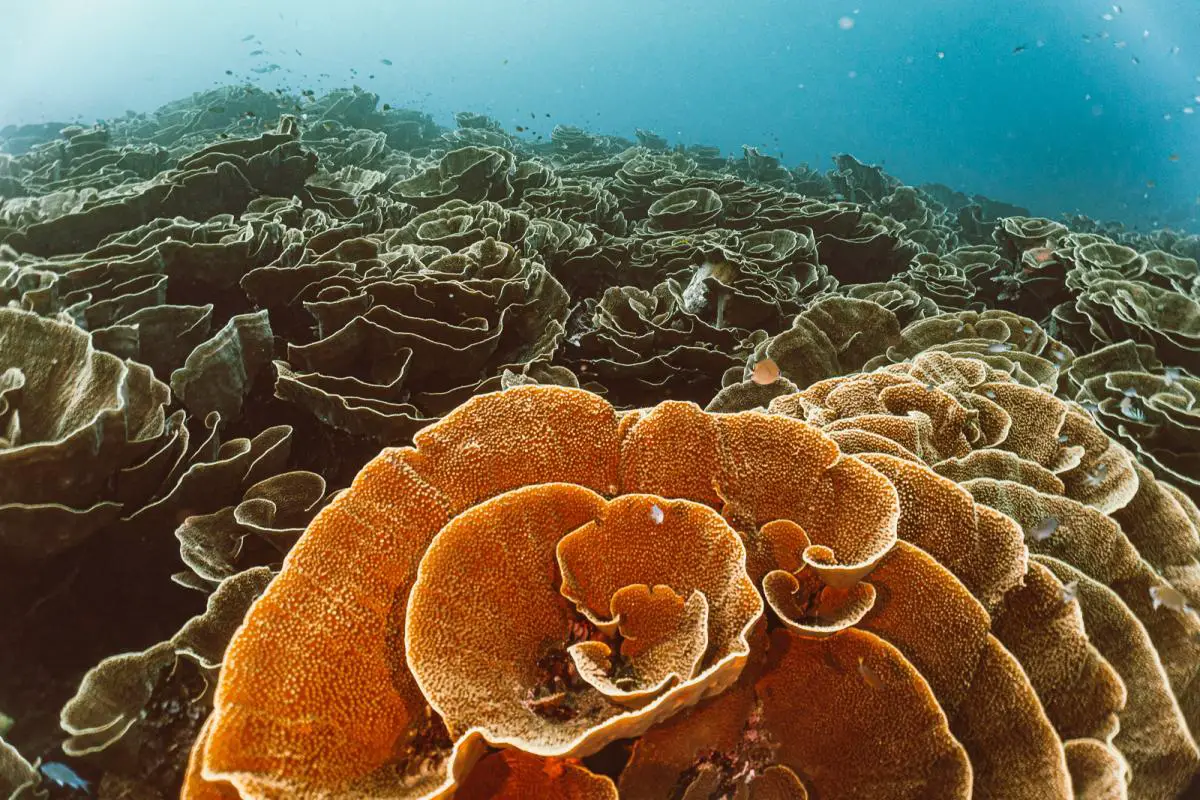
The currents that swept through Rainbow Reef brought with them a wealth of nutrients that nourished the marine life. This abundance was evident in the health and diversity of the reef inhabitants. The visibility was often exceptional, allowing me to take in the intricate details of the coral formations and the vibrant marine life that called this reef home.
As I descended beneath the waves, the underwater world unfurled before my eyes. Soft and hard corals painted the landscape in a mesmerizing palette – pinks, purples, reds, and oranges – covering every nook and cranny. The corals had crafted intricate structures resembling underwater gardens, making it feel like I was exploring an enchanted realm.
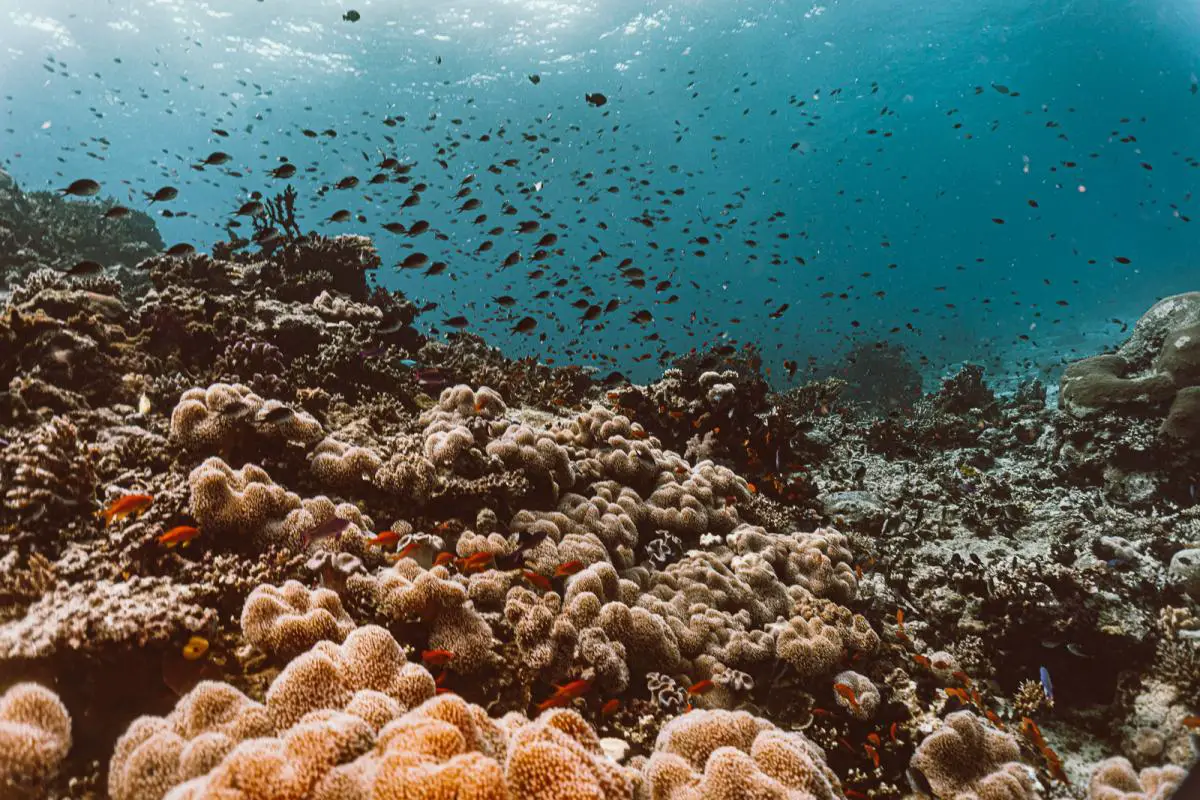
Navigating through the crystal-clear waters, I encountered a bustling community of marine creatures. Schools of anthias and butterflyfish painted the scene with their vibrant hues. Barracudas and trevallies cruised by with an air of authority, while the occasional reef shark glided gracefully in the distance, a reminder of the ocean’s wild beauty.
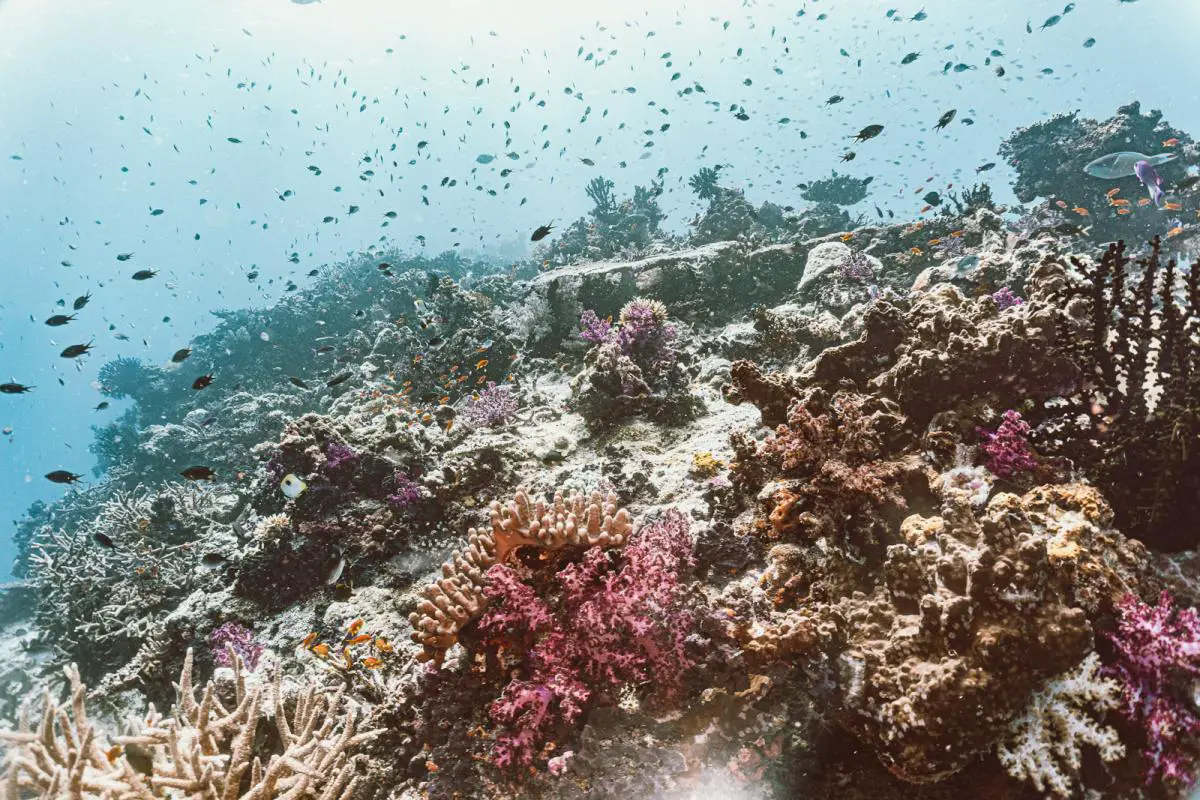
While I don’t remember the name of every dive site I visited, the one that did stick out to me was the cabbage patch. This was a beautiful dive that saw us float across a huge garden of flower corals. This was by far the biggest congregation of these coral species I’ve seen and made for some great photos.

In the end, photos and videos are the most important things so this will hopefully do a better job of reflecting the beauty of Fiji diving than my writing!
Great White Wall Dive
he Great White Wall in Fiji stands as one of the most famous and iconic dive sites, renowned for its unique and captivating features that draw divers from around the world to experience its underwater grandeur. Without a doubt, one of the main draws for people diving in the Rainbow reef is the chance to visit the Great White Wall. This dive site has been rated as one of the top 10 dive sites in the world and it’s not difficult to see why.

First and foremost, the name itself piques curiosity. Contrary to what one might assume, the name “Great White Wall” does not refer to sharks; rather, it’s derived from the stunning white color of the soft coral that covers the underwater cliffs. This intriguing contrast against the deep blue of the ocean creates a striking visual impact that remains etched in the memory of divers fortunate enough to explore this site.

The main allure of the Great White Wall lies in the sheer beauty and diversity of its soft corals. The coral formations here are a testament to nature’s artistry, exhibiting an astonishing array of shades, from immaculate white to delicate shades of pink and lavender. This vibrant display of color is a result of the nutrient-rich currents that flow through the area, nourishing the corals and contributing to their vibrant hues.
You must time the Great White Wall Dive
The Great White Wall can only be dived twice a month and has to be timed perfectly to the tides and moon cycles. The strength of the currents at these times allow these beautiful white corals to bloom and open completely and you’re left with a huge wall of beautiful white corals.
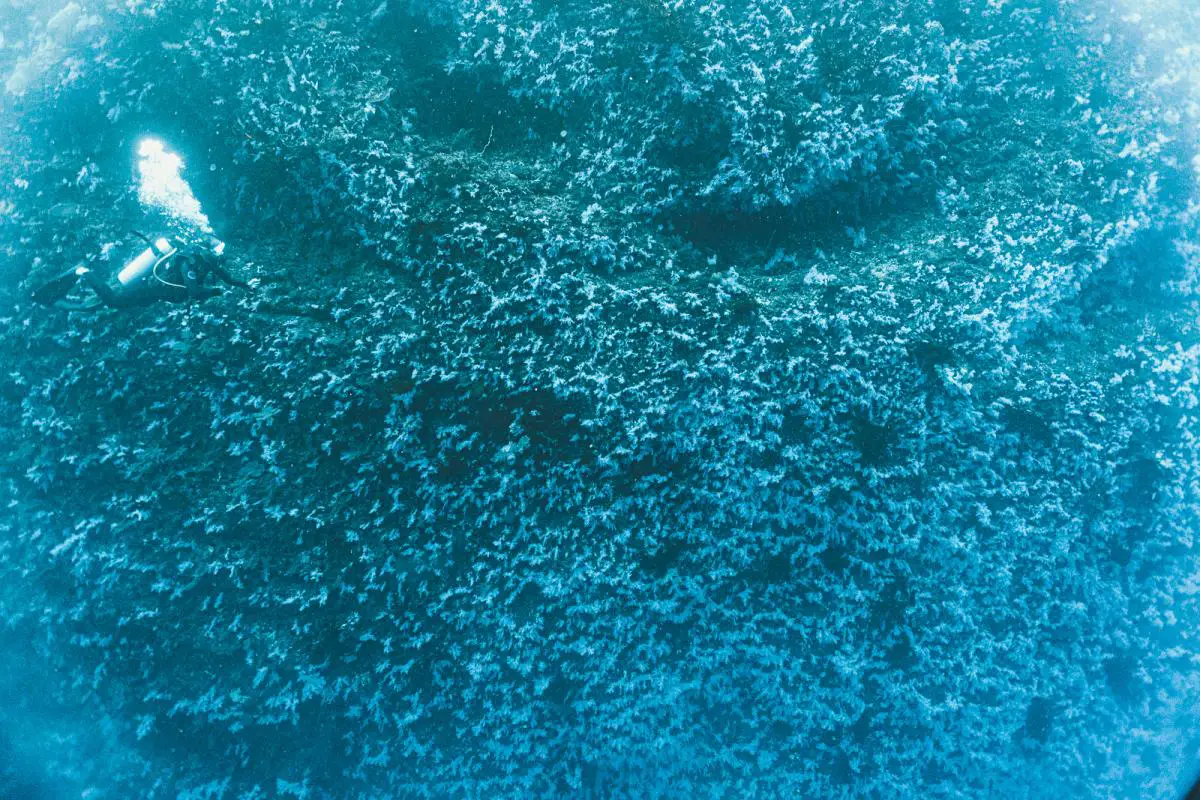
The key factor that dictates the timing of dives at the Great White Wall is the phase of the moon. Specifically, the site is best explored during the period surrounding the full moon. This is due to the phenomenon known as “muck diving,” which occurs as a result of the lunar cycle’s influence on the corals’ reproductive behaviors.
During the nights leading up to the full moon, the corals release their eggs and sperm into the water. This synchronized mass spawning event is a marvel of nature, contributing to the reproduction and genetic diversity of the coral population. However, it also creates unique diving conditions. The released eggs and sperm attract a multitude of marine life, including filter-feeding organisms and nocturnal predators that are drawn to the abundance of food.
Diving during this period offers a rare opportunity to witness the underwater ecosystem in a state of heightened activity. The coral reefs come alive with a flurry of movement as creatures seize the opportunity to feed and reproduce. This event also provides an extraordinary chance to observe marine life interactions that are not typically visible during other times of the month.
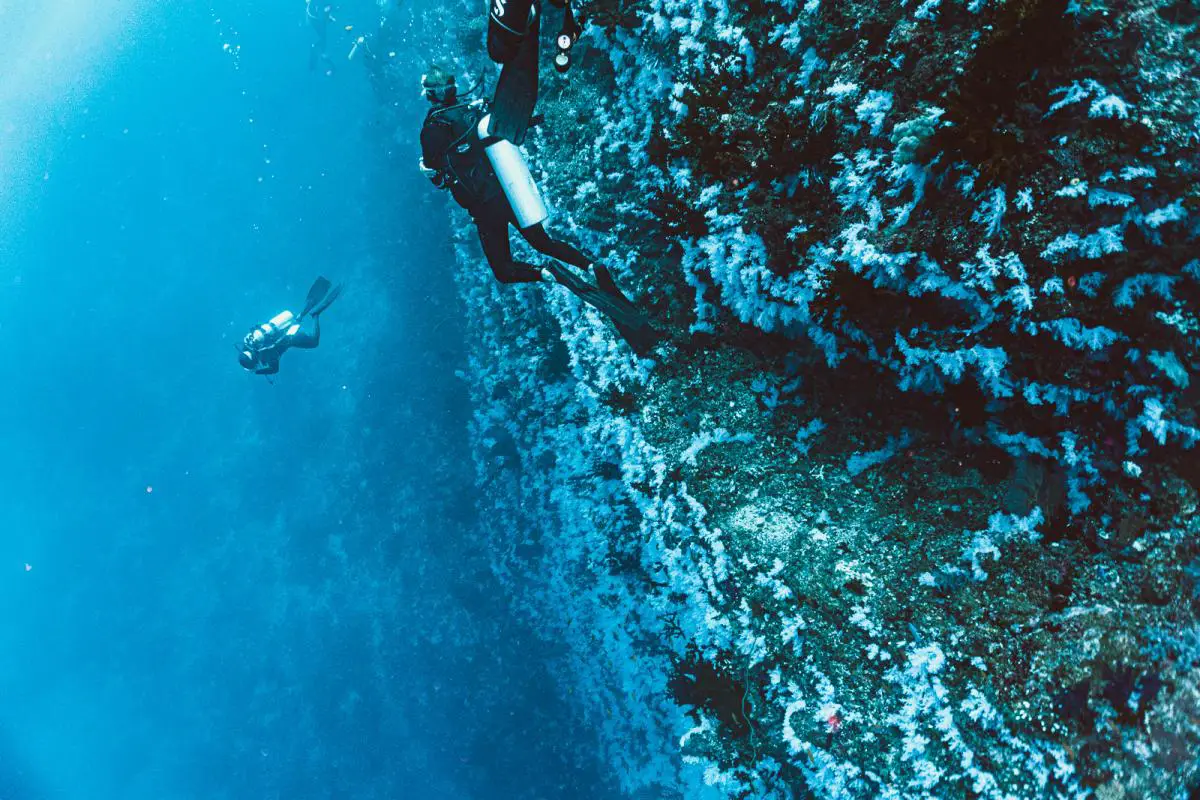
The specific timing of the dives is carefully planned around the lunar cycle. Divers often need to coordinate their trips to align with the full moon phase. This adds an element of planning and excitement, as divers eagerly anticipate the chance to witness this natural spectacle.
Day 11-17: Yasawa island hopping
For the final part of this itinerary, we went to the Yasawa island chain which is famous for its incredible beaches and scenery. From Taveuni, you’ll need to fly back to Nadi and take a ferry or helicopter to the Yasawas.
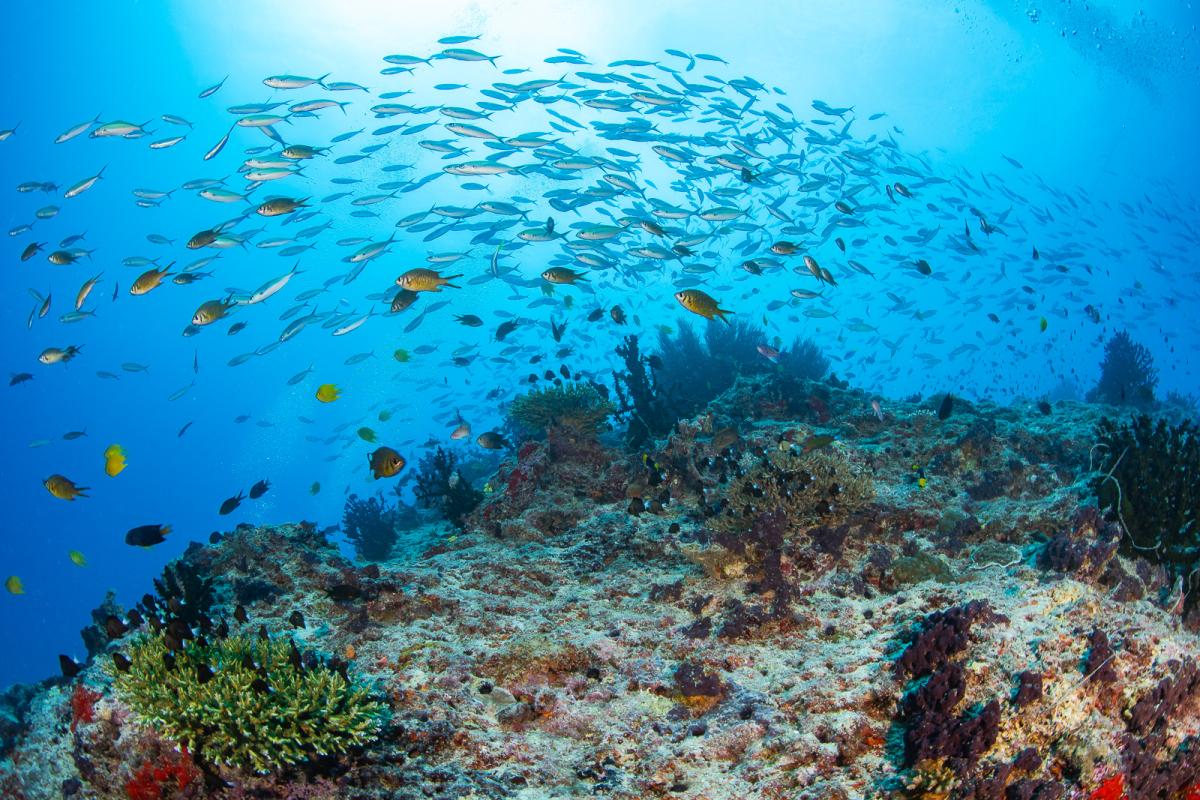
Unfortunately, the earliest flights from Taveuni to Nadi only arrive in Nadi around 10am. This is too late for the Yasawa Flyer (the ferry) as it only leaves once a day from Denarau at 9am. Therefore, we had no choice (woe to us!) but to take a helicopter to the first island in the Yasawas. The helicopter, as you can expect, offers absolutely stunning views of the archipelago and reef system.
The tough part about the Yasawas is deciding which islands you’ll stay on with the limited time you have. My Yasawa islands post goes into detail about the various resorts/islands that are available and how I decided which places to stay.
Taking The Yasawa Flyer
The Yasawa flyer is the main form of transportation within the Yasawa islands. If you’re planning to visit multiple islands, it’s almost guaranteed you’ll buy a ticket or two on this ferry at some point during your trip. I boarded this boat on three separate occasions as I stayed in three different resorts.

The Yasawa flyer is operated by South Sea Cruises which also have boats to other island chains like the Mamanuca. The ferry terminal is in Port Denarau which is about 20 minutes south of Nadi. As part of the ticket price, they will actually pick you up and drop you off from your hotel in the Denarau area or in Nadi.

How the Yasawa Flyer works
The Yasawa flyer is a ferry that runs once daily visiting all of the islands within the Yasawa island chain. It starts at Port Denarau, 10 minutes south of Nadi like every other ferry in this area. It departs Port Denarau around 9am every day and makes its way up the Yasawa island chain stopping at every resort along the way.

As you can see on the map, it makes quite a few stops as there are plenty of resorts in this archipelago. The stop furthest north is the Blue Lagoon, Coconut Resort, and Nanuya Island Resort which the boat reaches around 1:30pm. After it finishes this stop, it returns southward to Port Denarau and arrives back in Nadi at 6:00pm.
Therefore, it visits every resort In the Yasawas twice a day, once in the morning, and once in the afternoon.
Nanuya Island Resort
The first stop on my Yasawa island hopping adventure was the Nanuya Island Resort. I came here by helicopter from Nadi since I wanted the helicopter experience and I didn’t want to waste a day in Nadi since I arrived in Nadi after 9am when the Yasawa flyer departs.
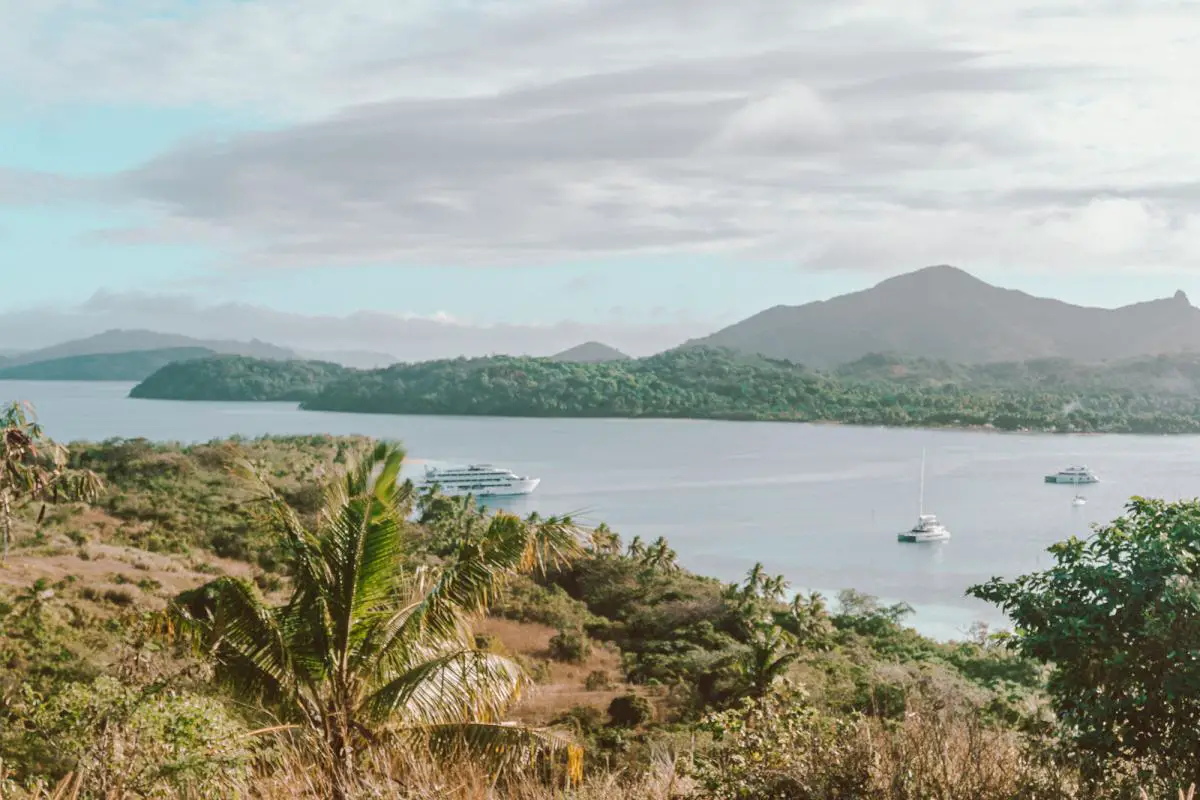
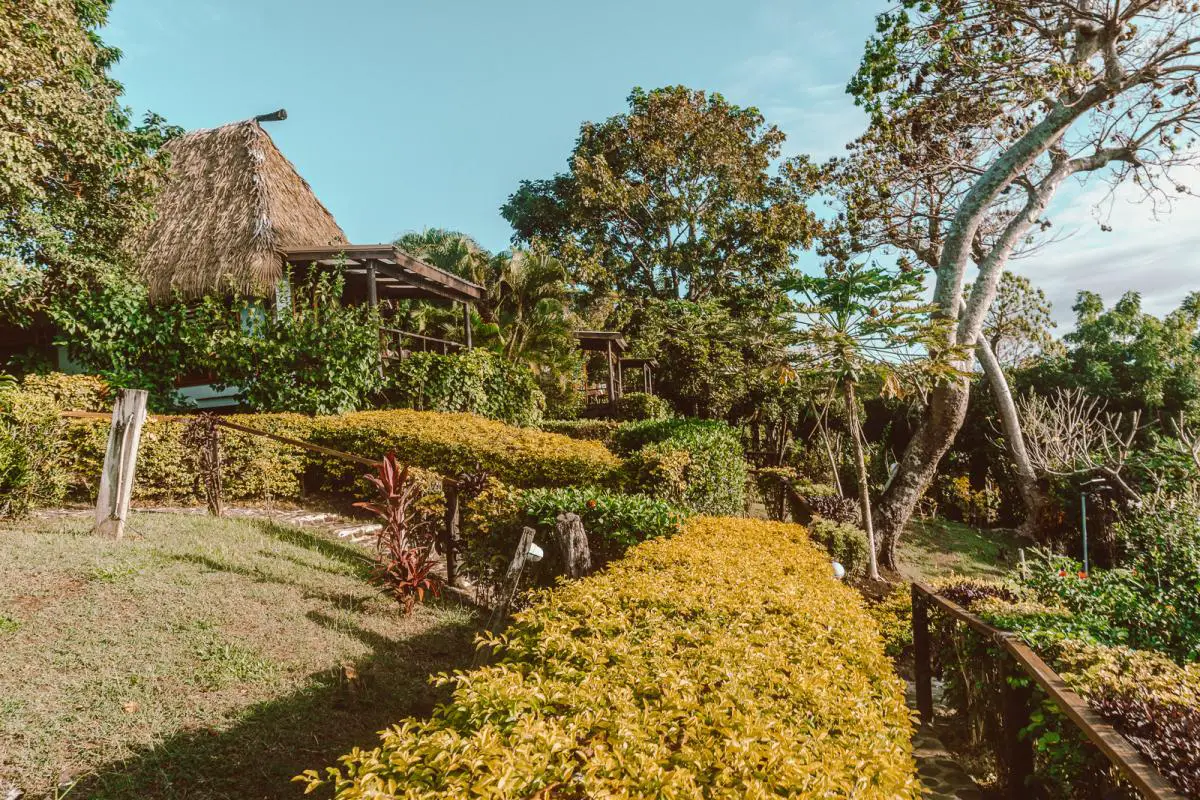
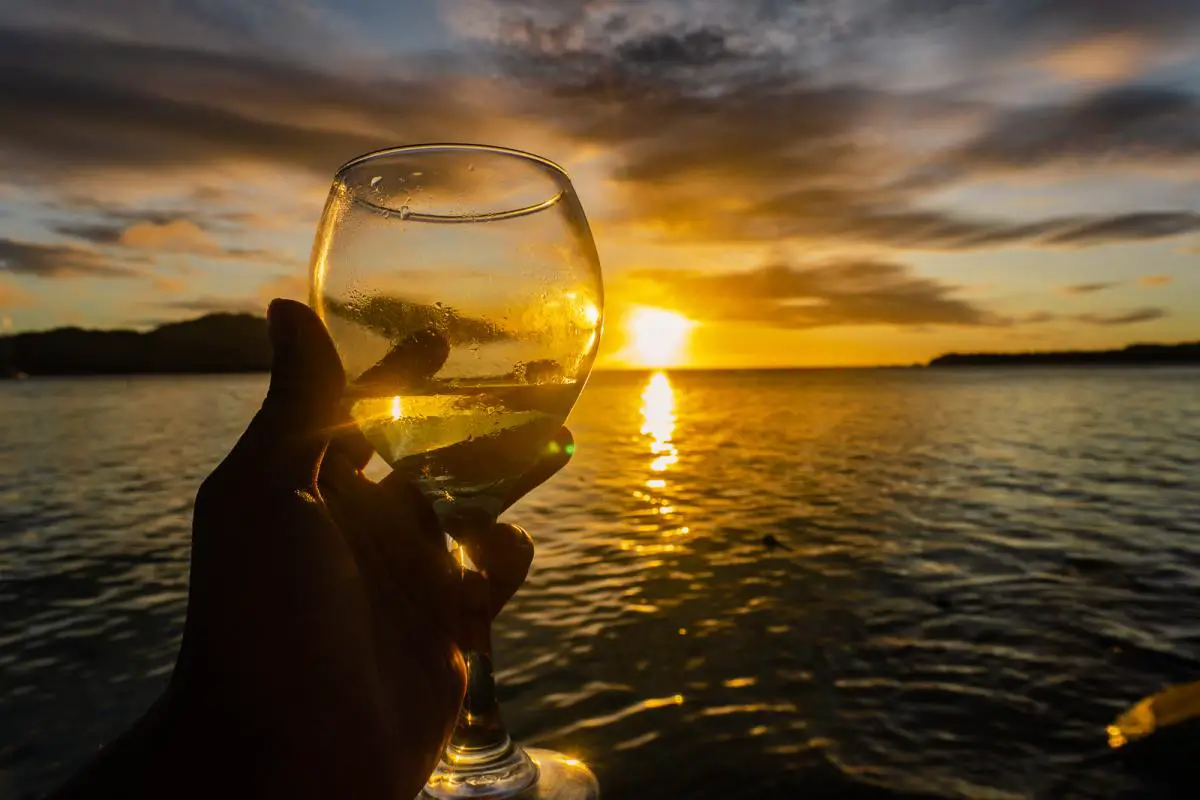
The resort itself was also very nice with comfortable yet spacious rooms. There were beach front rooms as well as rooms located on the hill with incredible views overlooking the Pacific. What stood out to me most was the food at this resort. We didn’t have to buy a meal plan which means we could eat less and save money (win win for everyone). The homemade bread and attention to detail for the dishes were surprising given how remote we were. This island also faces west which made for fantastic sunsets from the restaurant.
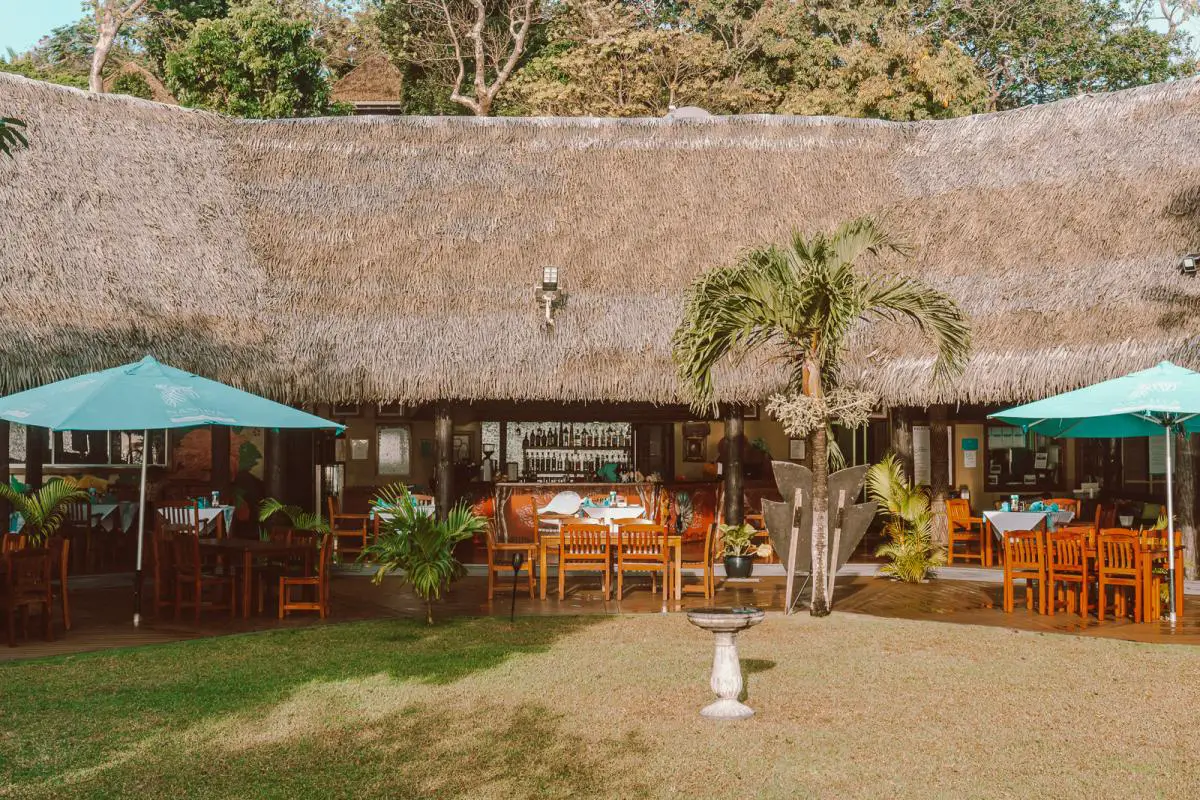
Located on the island of Nanuya Lailai, this island has probably one of the most beautiful and idyllic beaches in the Yasawa islands. The long strip of beach is adorned with beautiful white sand, perfect turquosie waters, and a little peninsula that makes for amazing sun lounging and photos. We pretty munch came here at all times to take advantage of the incredible beach.

Barefoot Manta Resort
Next stop on the Yasawa island chain for us was the Barefoot Manta Resort. From Nanuya Island Lodge, we took the Yasawa flyer 1h south to the beautiful Drawaqa island, home of the Barefoot Manta resort.


As you’d expect, this resort is famous for its manta rays which are residents in the nearby channel. This channel is a feeding station and attracts mantas year round. Guests at the resort have the opportunity to snorkel with them (no diving allowed). The resort sends out drones in the morning to check if there are mantas in the channel and then proceeds to beat a drum to let everyone at the resort know that mantas have been found and to prepare for snorkeling.
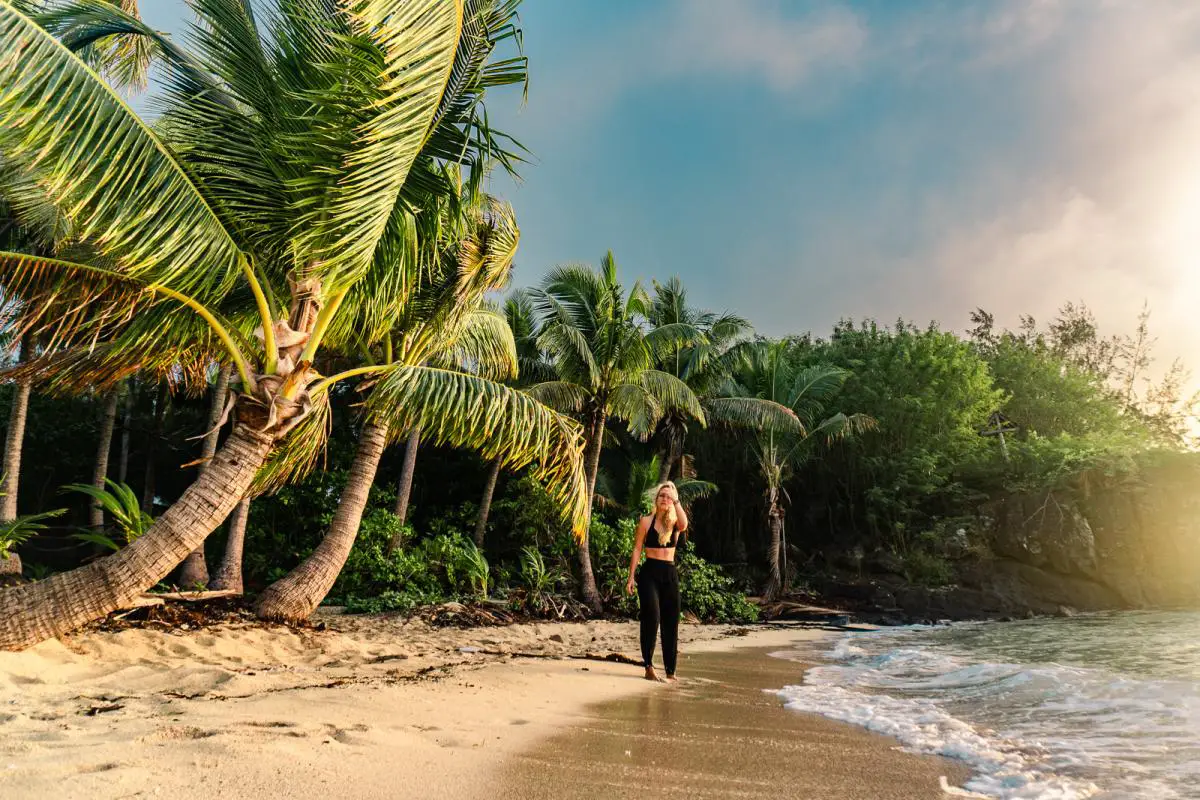
I didn’t bother with this as there were way too many people for too few mantas. For a price of 85 FJD, I decided it wasn’t so worth it. I’ve dived with hundreds of not thousands of mantas during my trips to the Komodo National Park and especially during my divemaster training where I saw them almost every day.
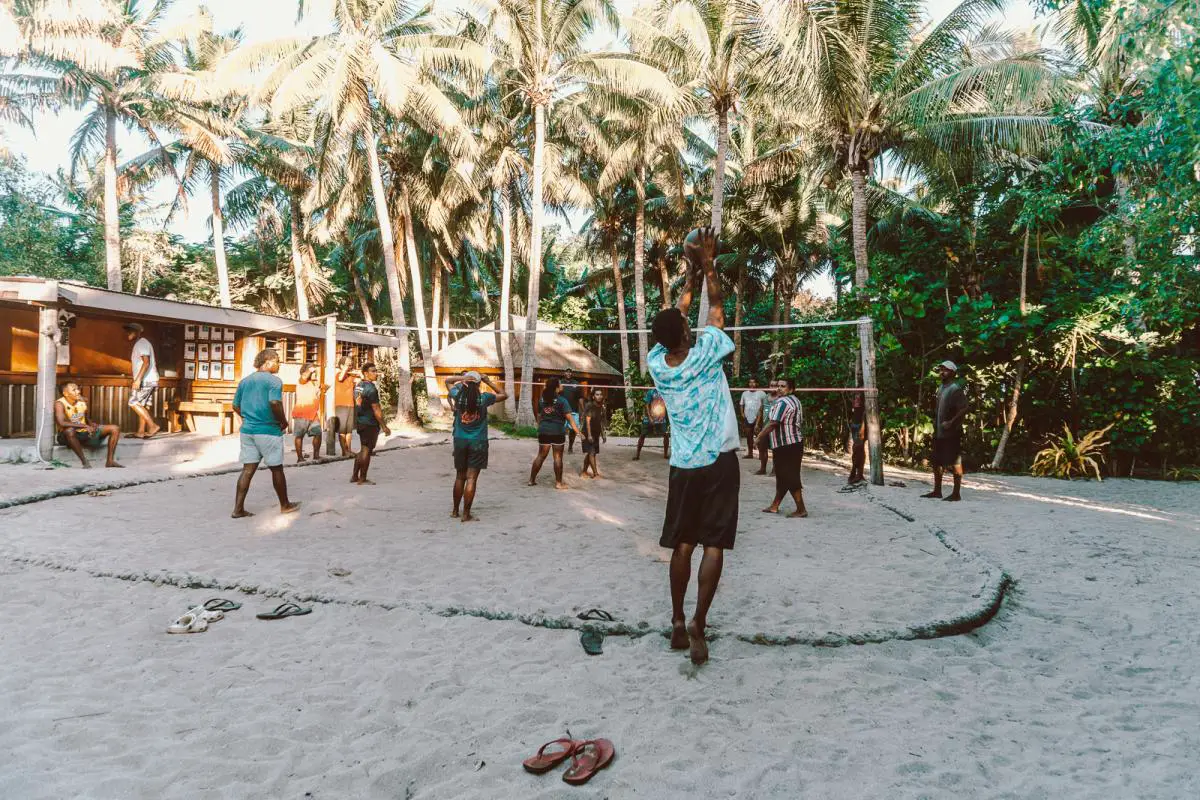
Barefoot Manta is a special place. It is an eco resort that maintains a rustic but comforting vibe. The whole resort is adorned with sand so you are literally walking barefoot the entire time which was incredible. All the bungalows are located directly on the beach (even the dorms are on the beach) and while my room was basic, it was 5 meters from the beach. The windows opened up completely and I could hear the waves crashing at night and wake up to the sunrise in the morning. It’s the island paradise I had envisioned before coming to Fiji.
Paradise Cove Resort
Finally, to end the trip, we stayed at the Paradise dove resort which was by far the most expensive of the bunch. This resort is catered towards bigger spenders which means you’ll find an older crowd and plenty of families. This was a huge change from the vibe at the Barefoot Manta.
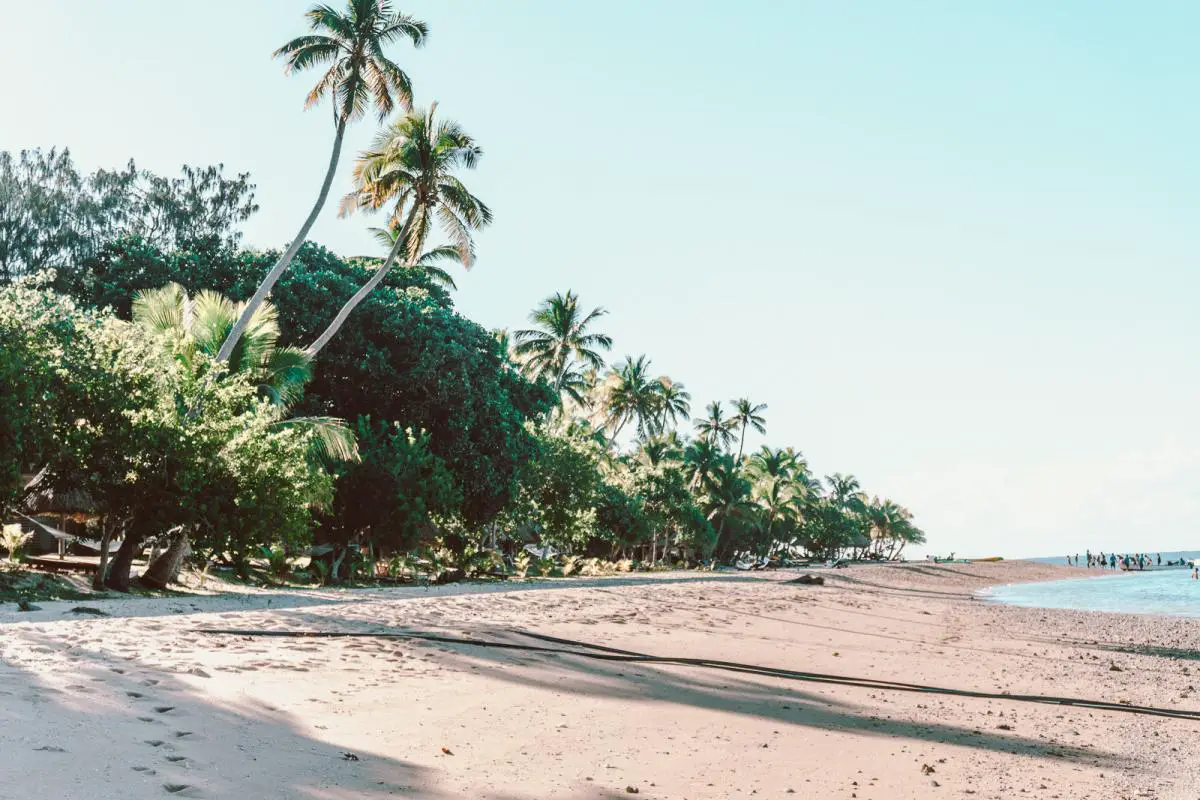
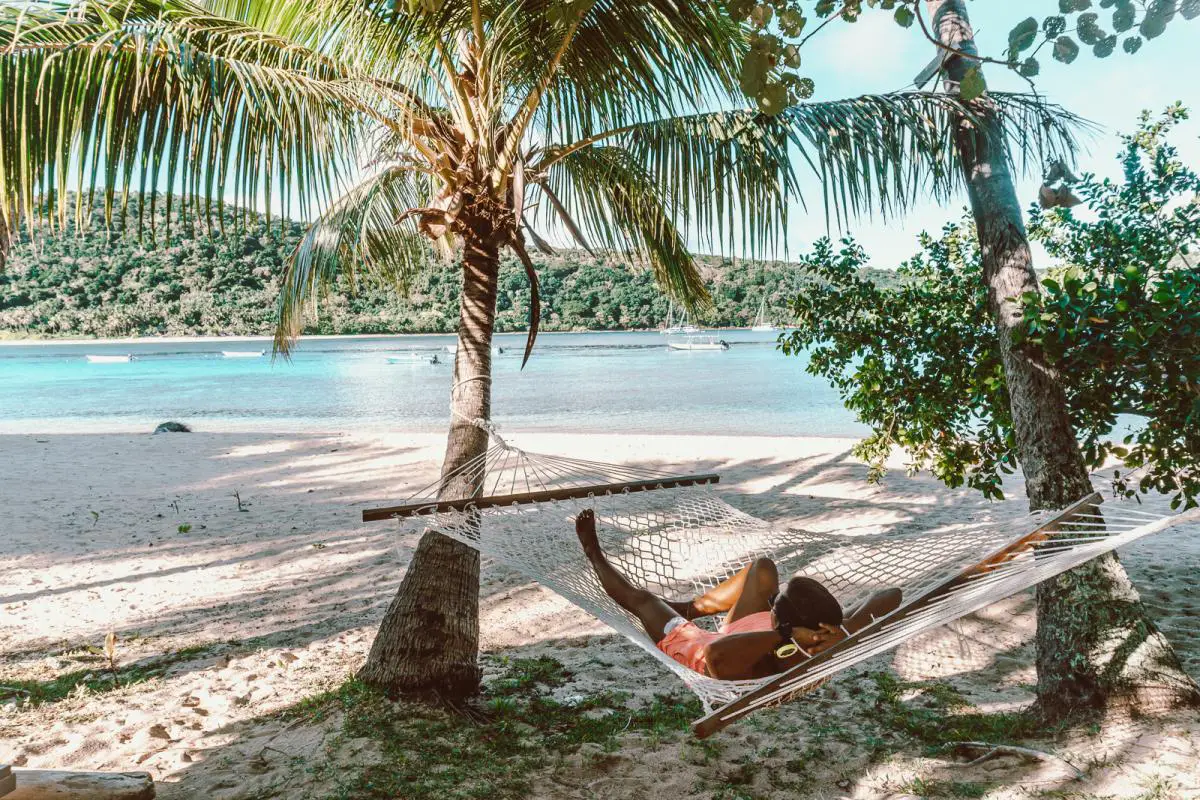
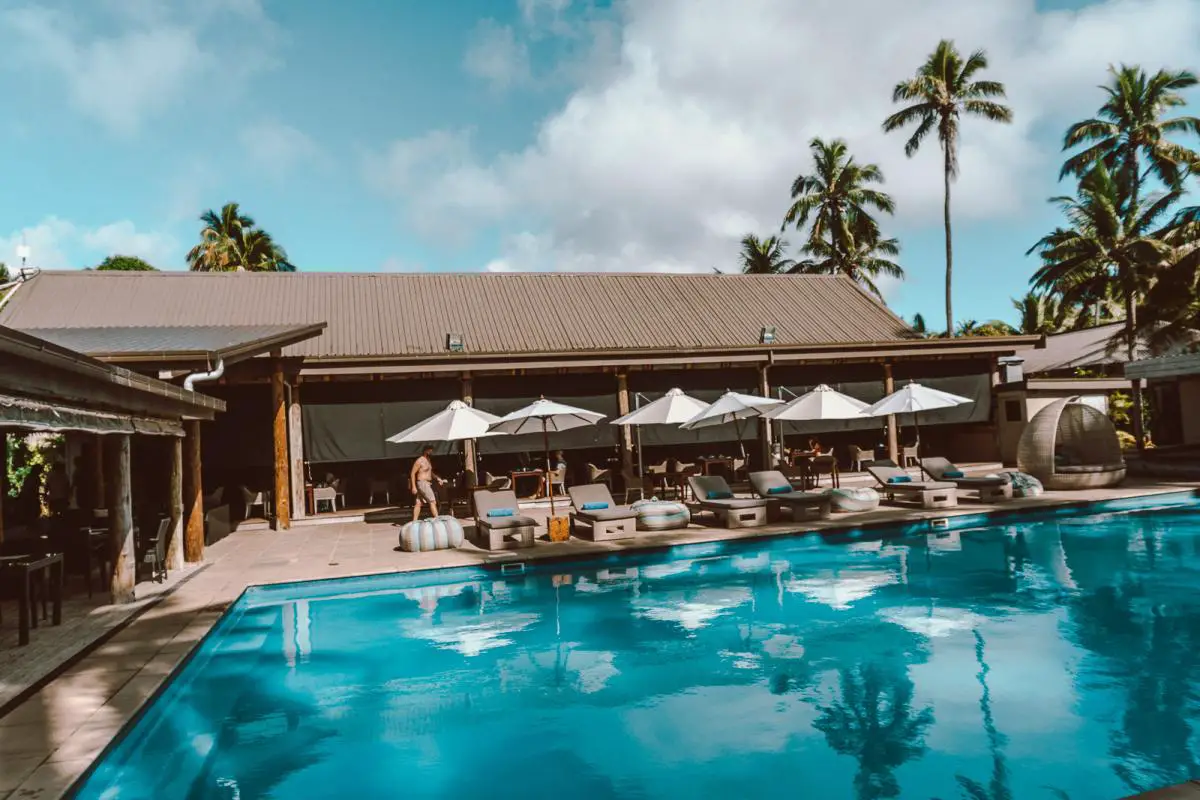
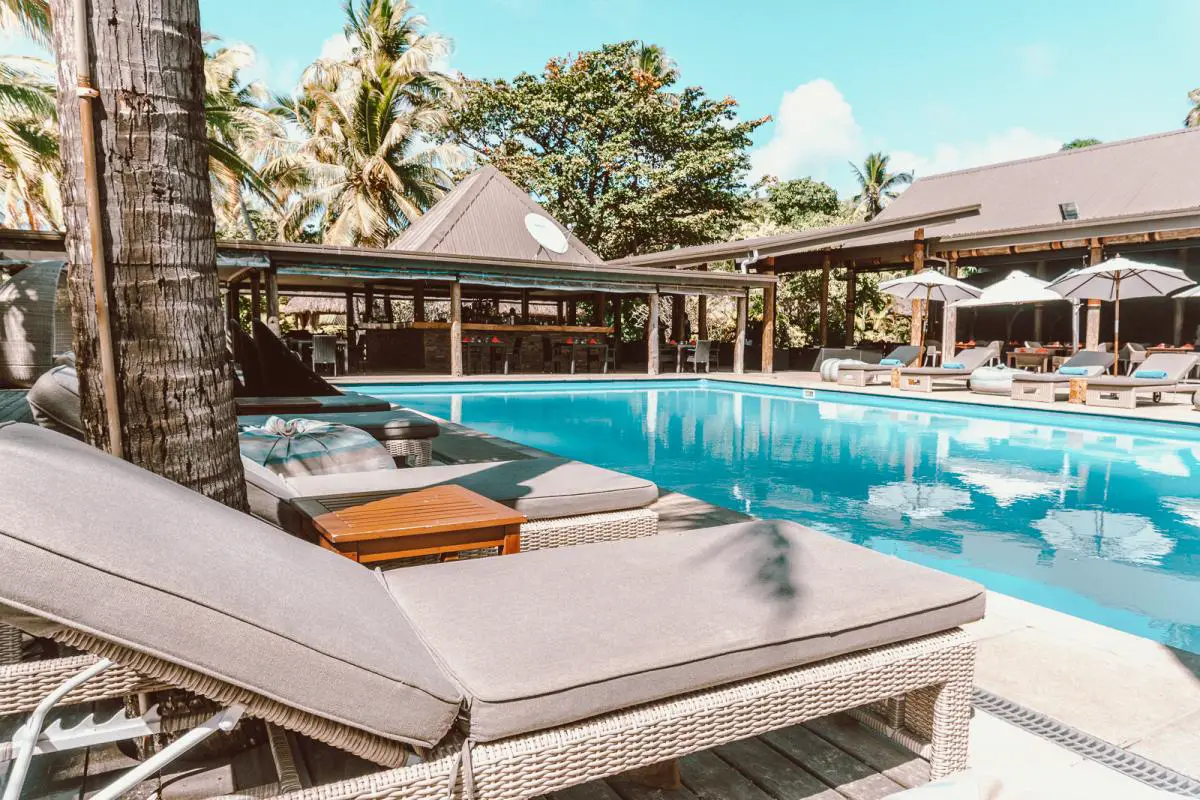

Nevertheless, the resort is beautiful and every bit the 4* rating it claims to be. It’s both modern and traditional at the same time with a beautiful beach in front of the resort. I thought the rooms here were very basic as only the much more expensive beach front villas will enjoy beach views. Everything else is one level back which means you have a view of nothing.

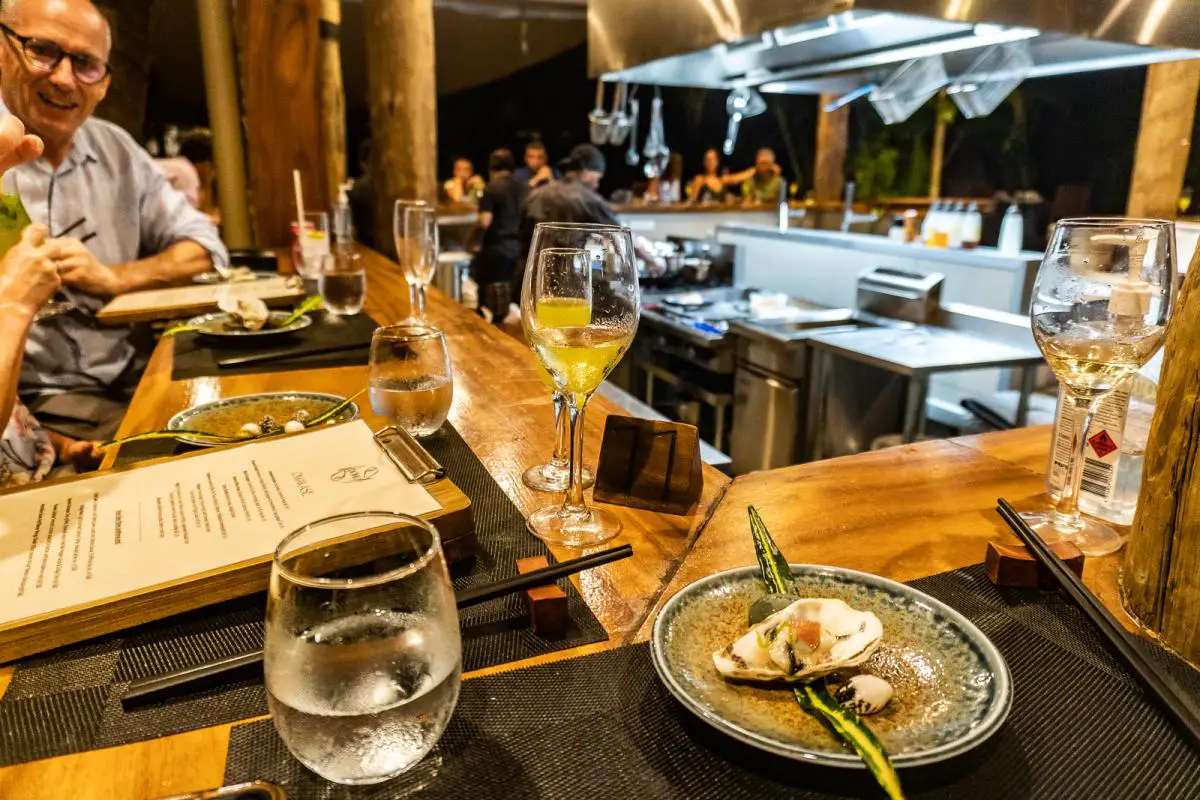
The food here is the standout with two restaurants serving traditional elevated Fijian dishes. One of the restaurants even had an omakase style tasting menu for dinner which was impressive given the price we paid.

Fiji itinerary day by day breakdown
To summarize my trip, this is how it was planned on a day by day basis.
Day 1: Arrive in Nadi, visit Cloud 9 Restaurant and Bar
Day 2: Natadola Beach and Coral Coast
Day 3: Nadi to Beqa Lagoon for the morning bull shark dive
Day 4: Full day relaxing in Pacific Harbor
Day 5: Flight to Taveuni
Day 6: Full day diving in Rainbow Reef
Day 7: Full day diving in Rainbow Reef
Day 8: Full day diving in Rainbow Reef
Day 9: Full day diving in Rainbow Reef
Day 10: Taveuni to Nadi, helicopter to the Yasawa archipelago – Nanuya Island
Day 11: Nanuya Island
Day 12: Barefoot Manta Resort
Day 13: Barefoot Manta Resort
Day 14: Paradise Cove Resort
Day 15: Paradise Cove Resort
Day 16: Back to Nadi
Day 17: Flight home



